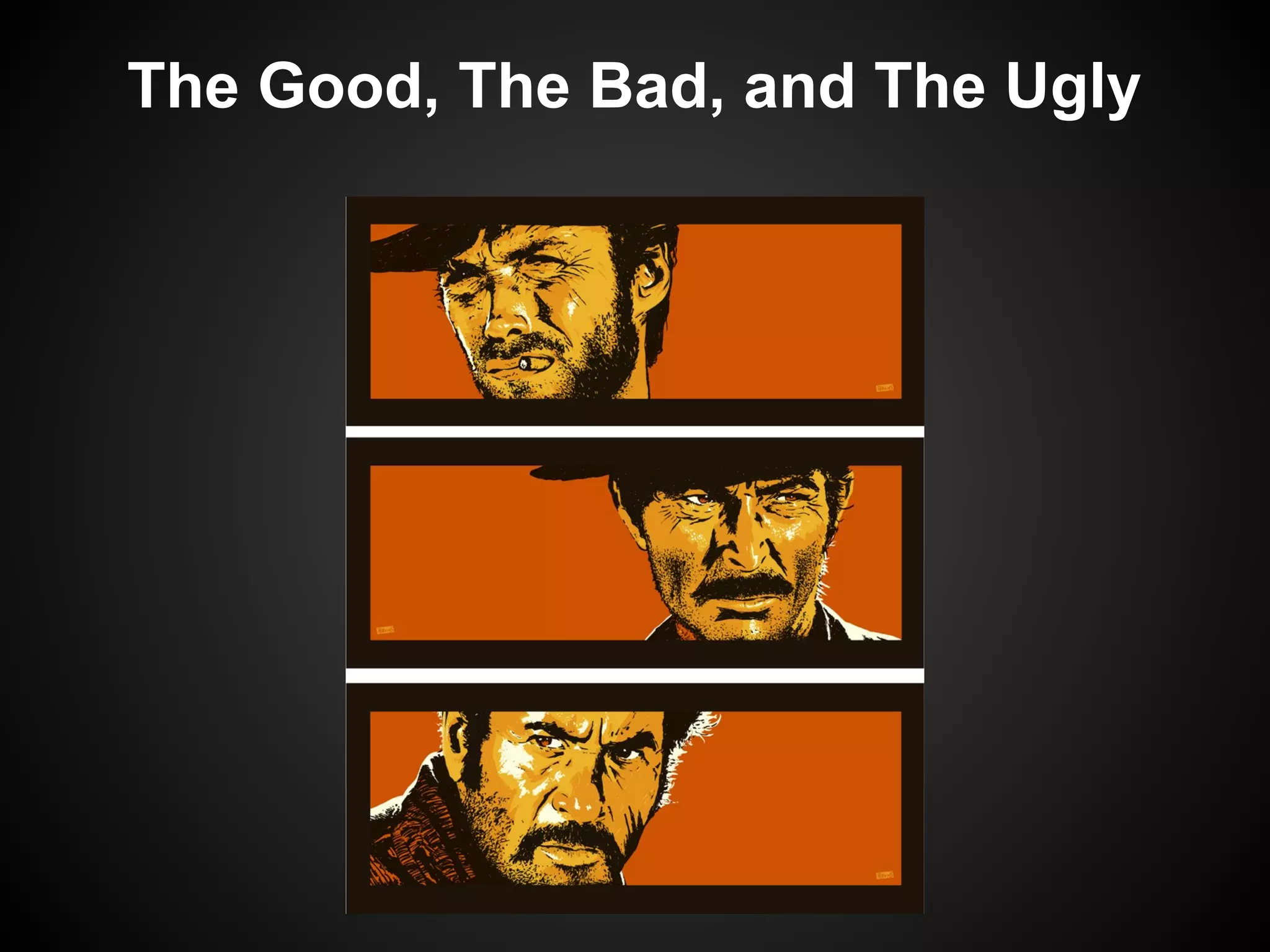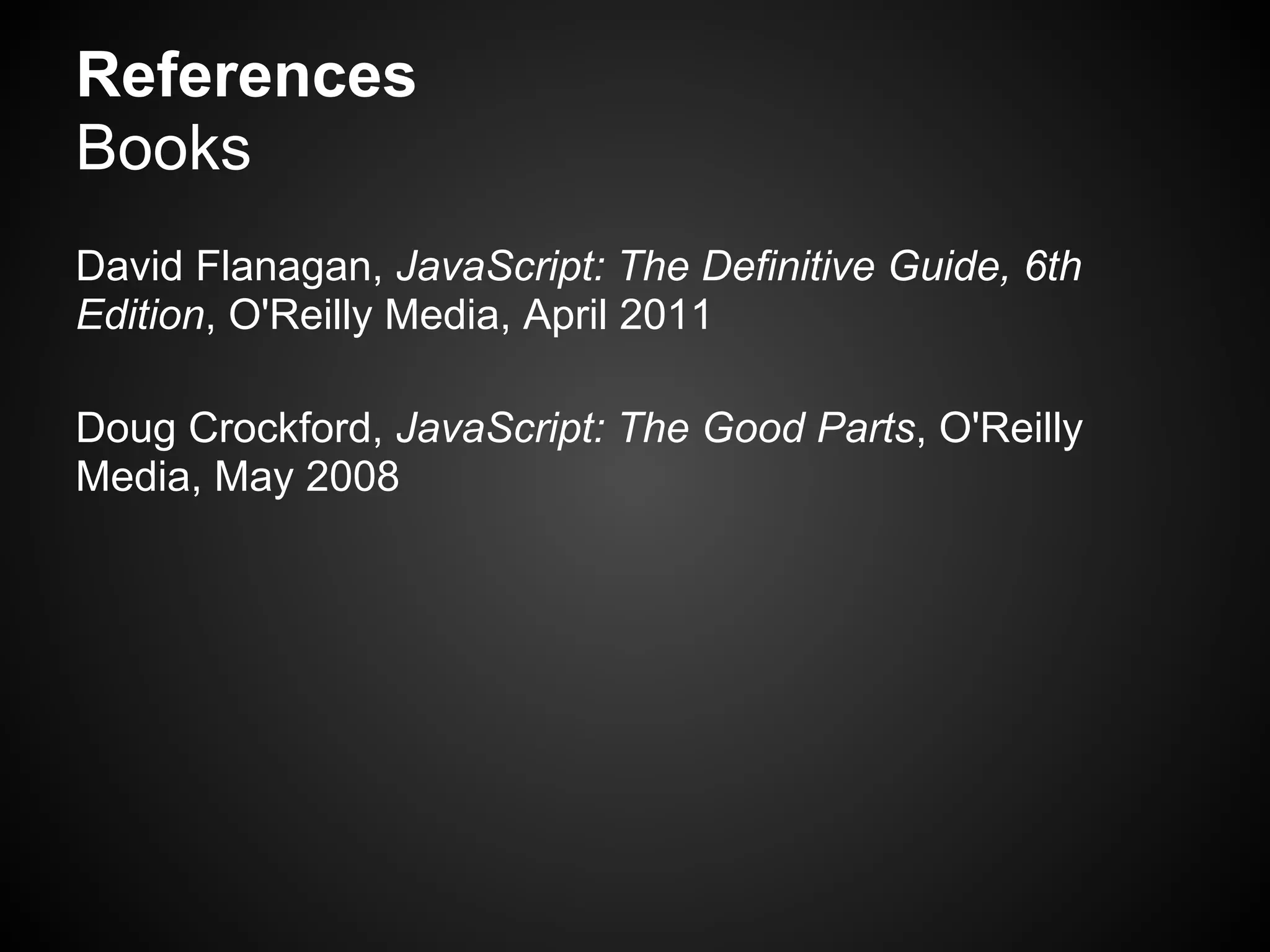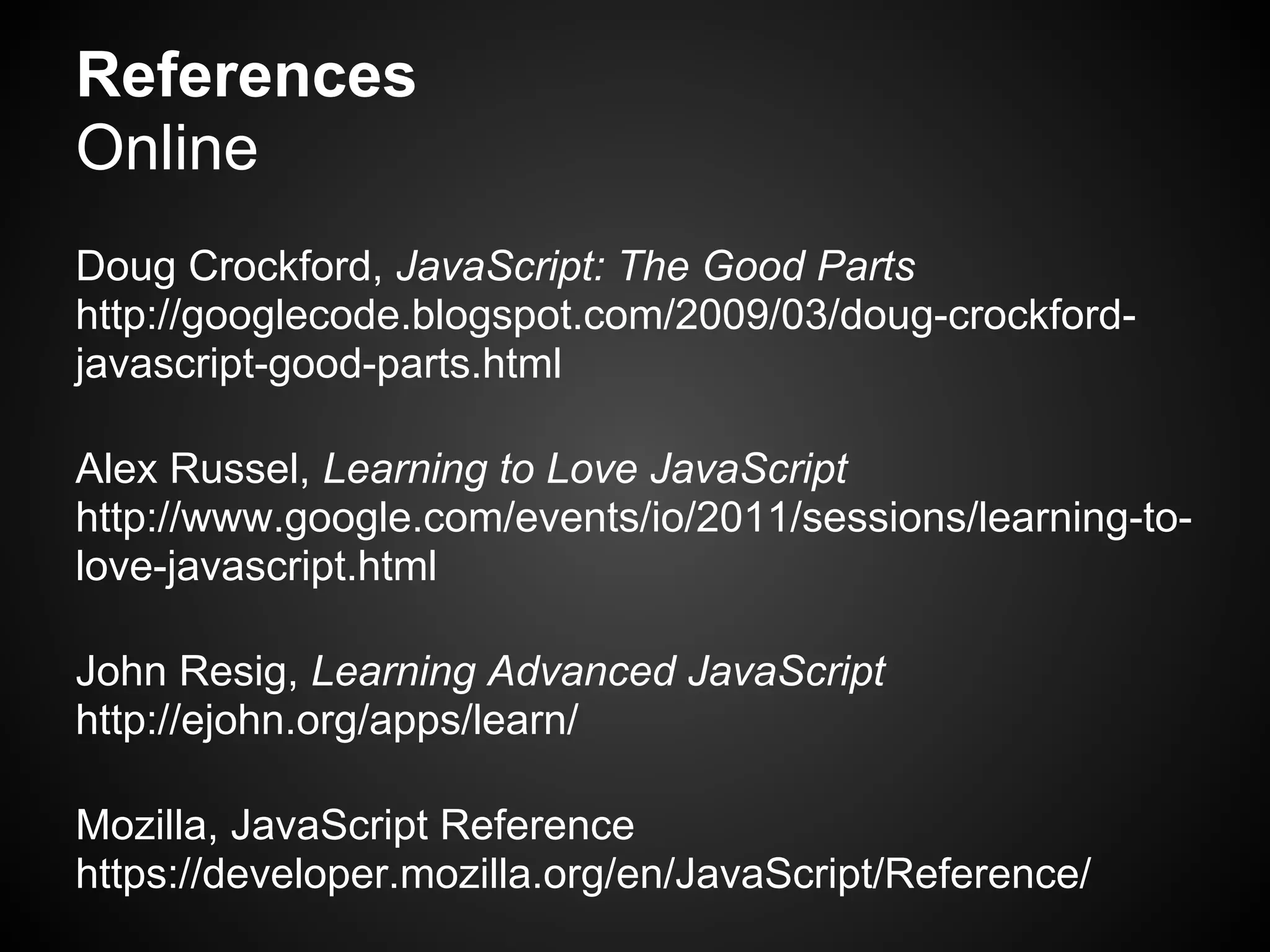JavaScript provides core functionality for web pages and applications. It has a C-like syntax and is dynamically typed. JavaScript code runs on both the client-side in web browsers and the server-side in environments like Node.js. It uses prototype-based inheritance where objects can inherit properties from object prototypes. New features are being added regularly through the ECMAScript specification. JavaScript allows DOM manipulation to modify web pages and event handling for user interactions.
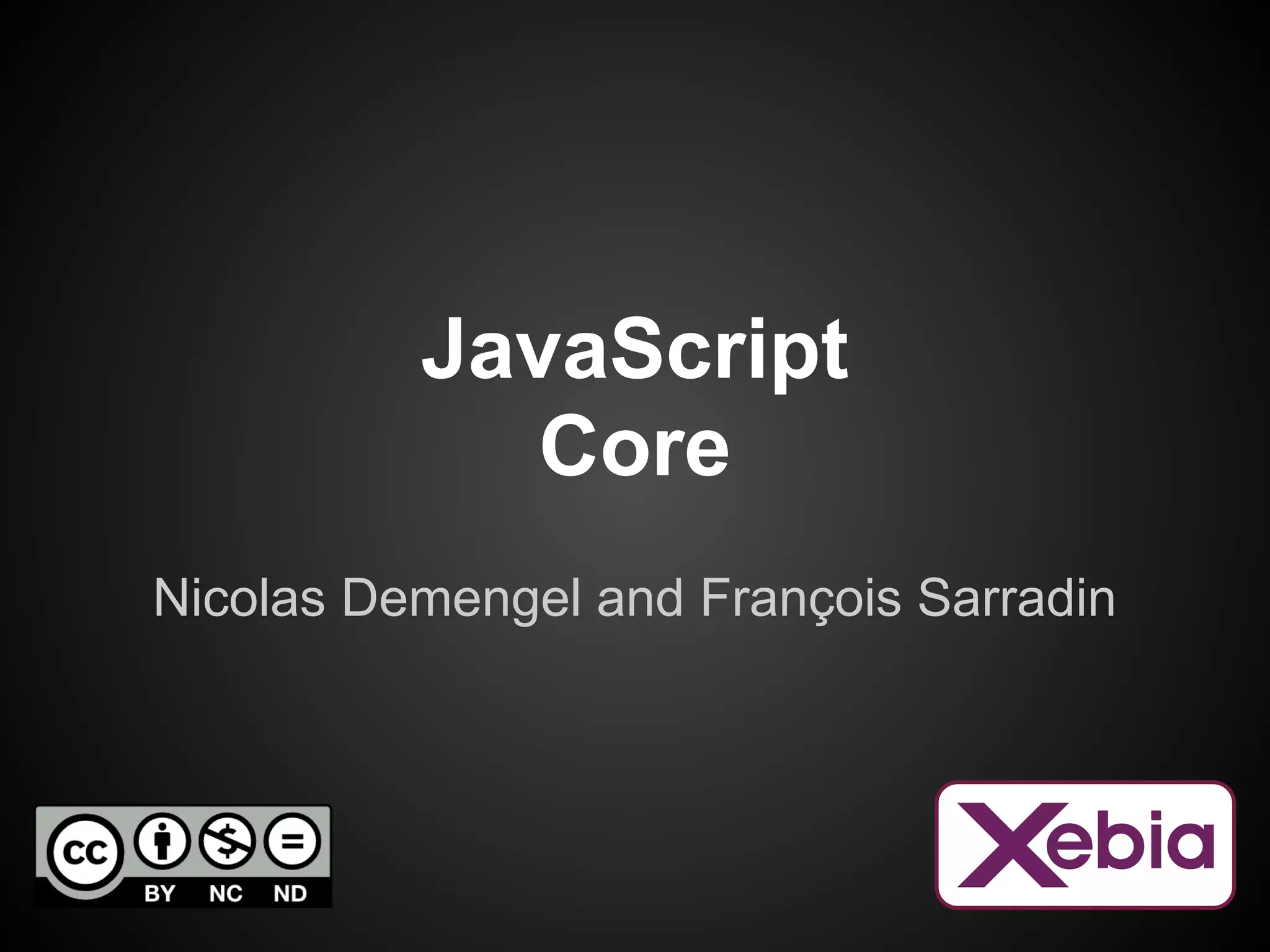
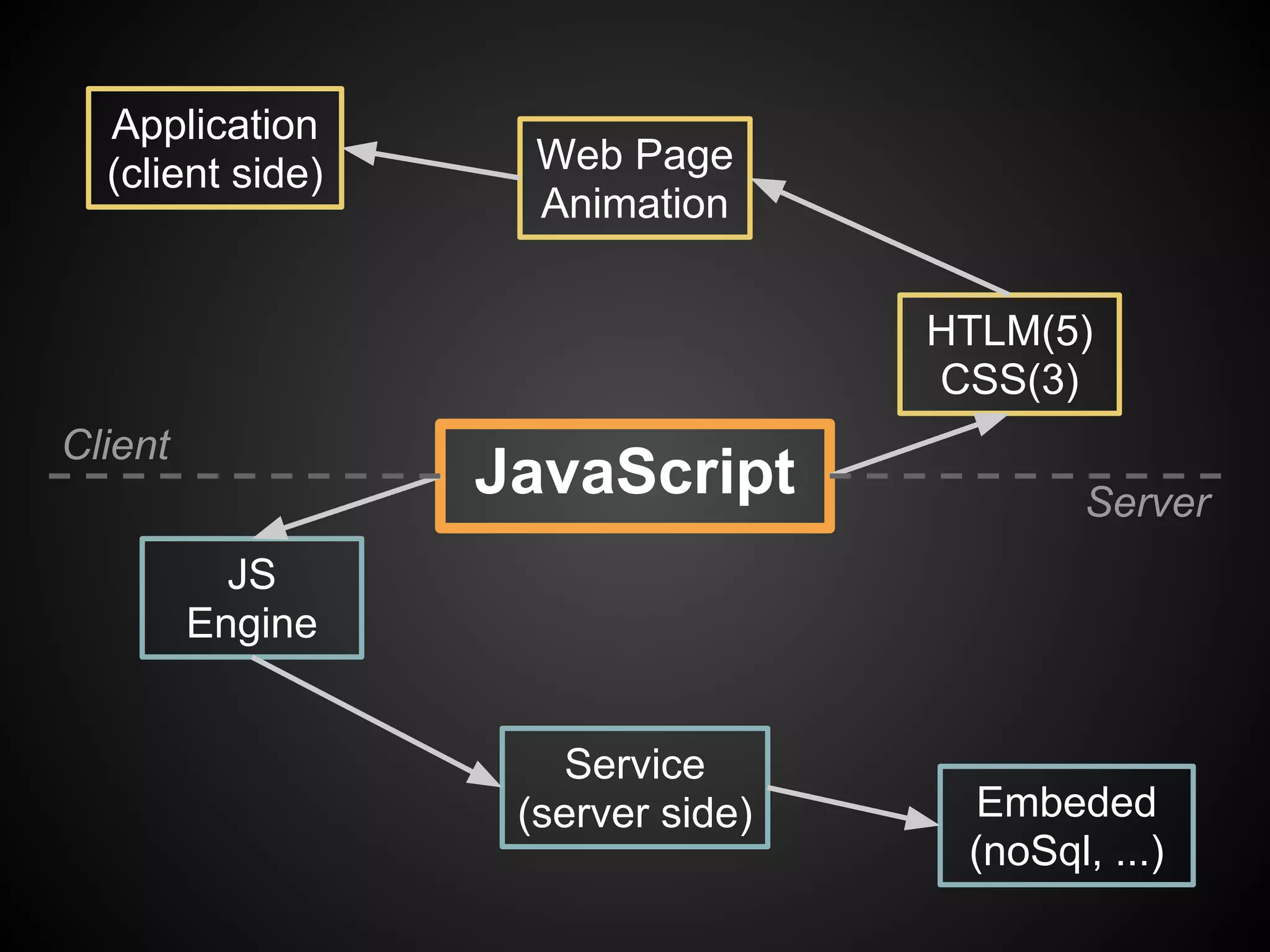
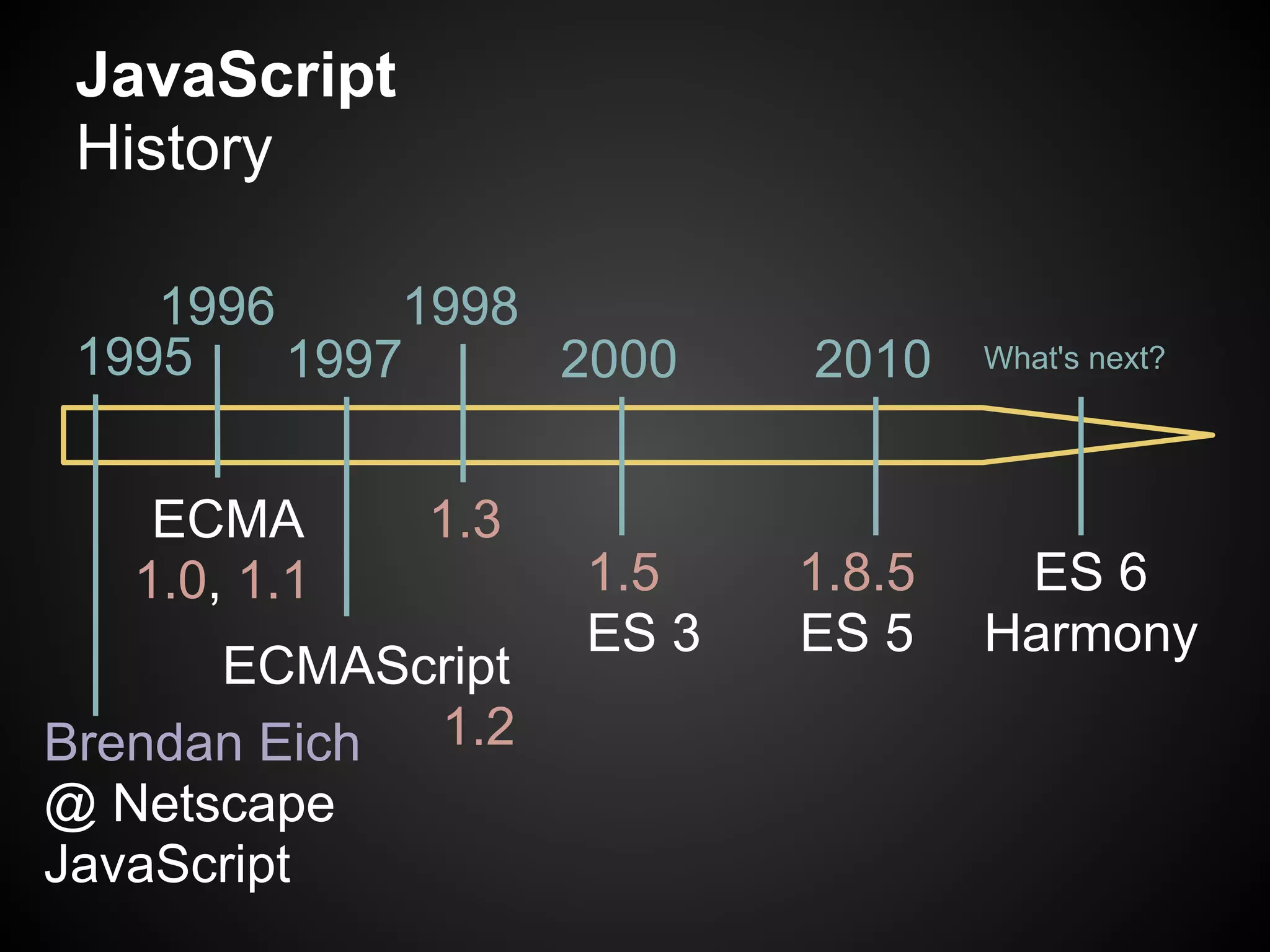
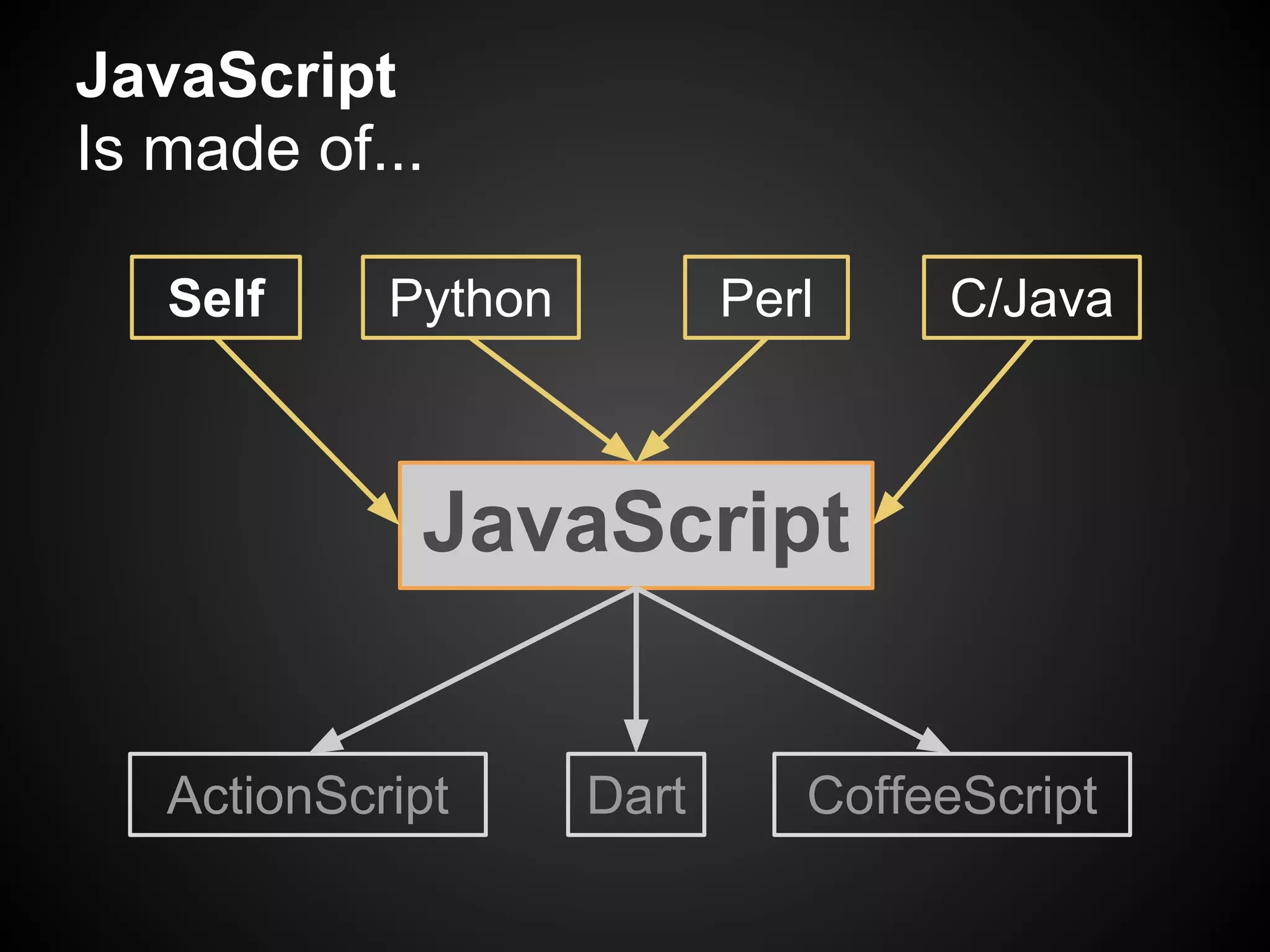
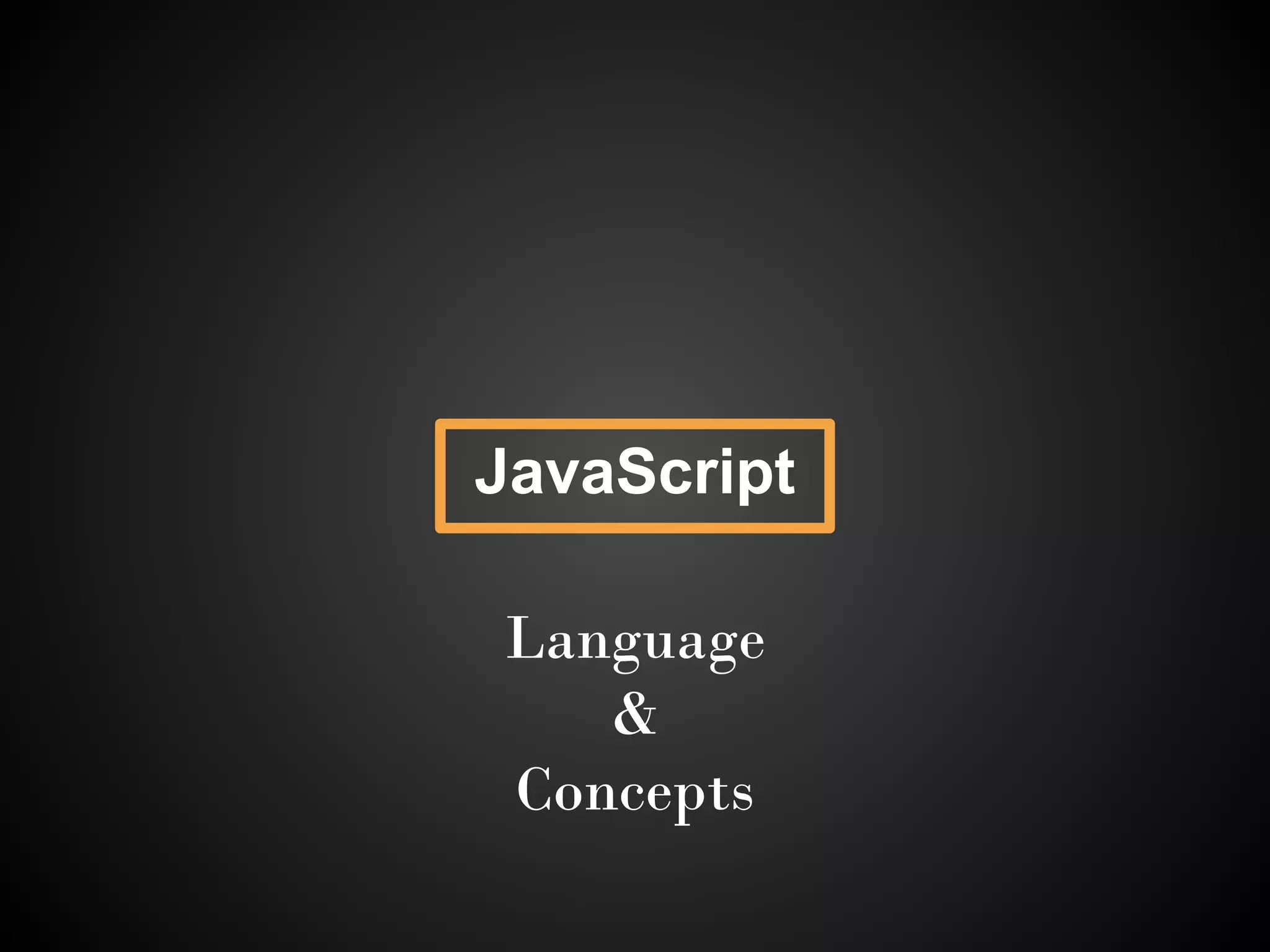
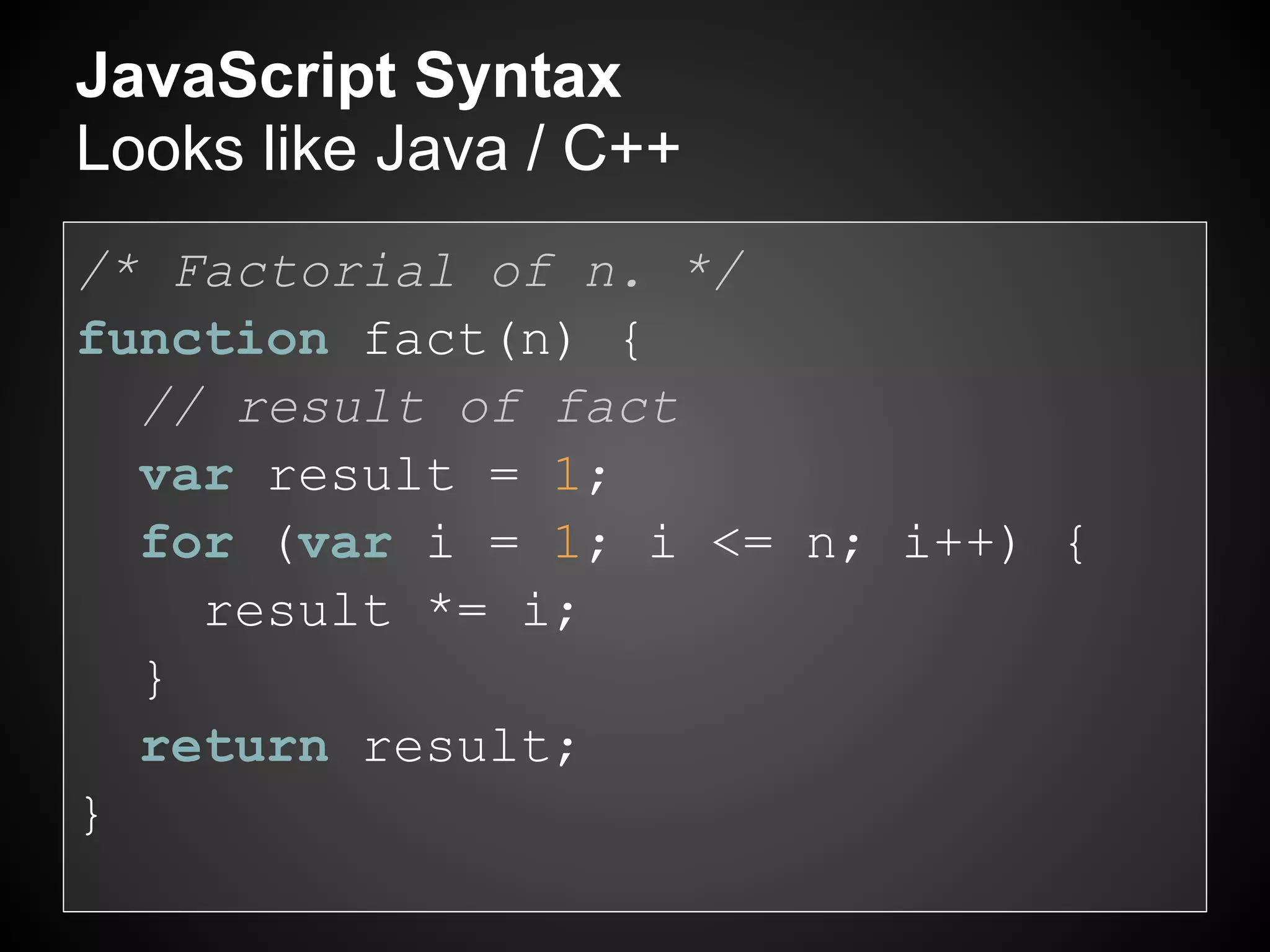
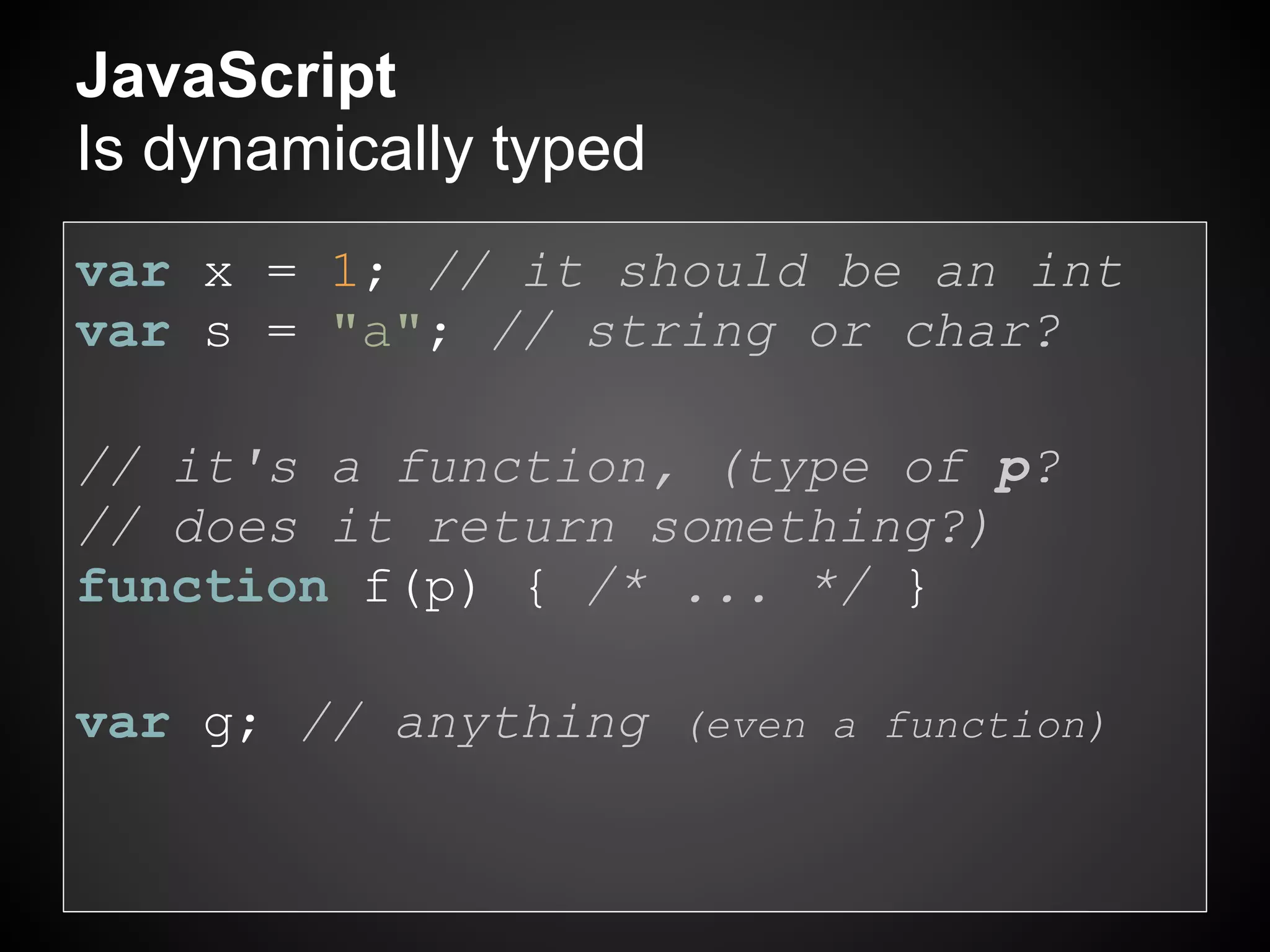
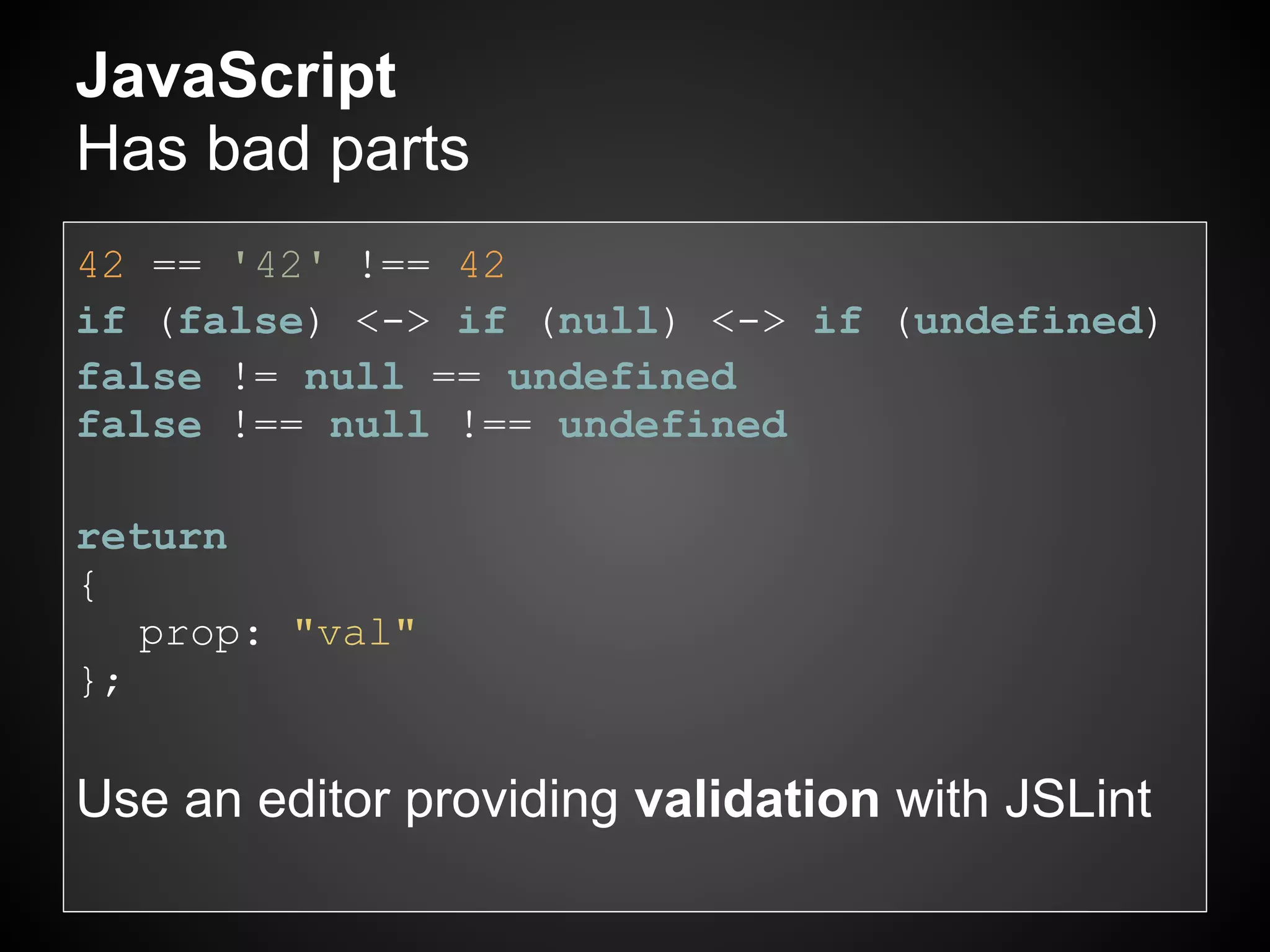
![JavaScript
Has few built-in types
● Boolean true / false
● Number 42 21.6 NaN +∞ -∞
● String "hi" 'hello'
● Date java-like
● Regexp /^.*([0-9]+)w{2,3}$/
● Object {prop: val}
● Array [a, b] (it's just an Object)
● Function function() {}
● List, Map, Set: where are you? => ES 6](https://image.slidesharecdn.com/javascriptcore-121004232850-phpapp02/75/JavaScript-Core-9-2048.jpg)
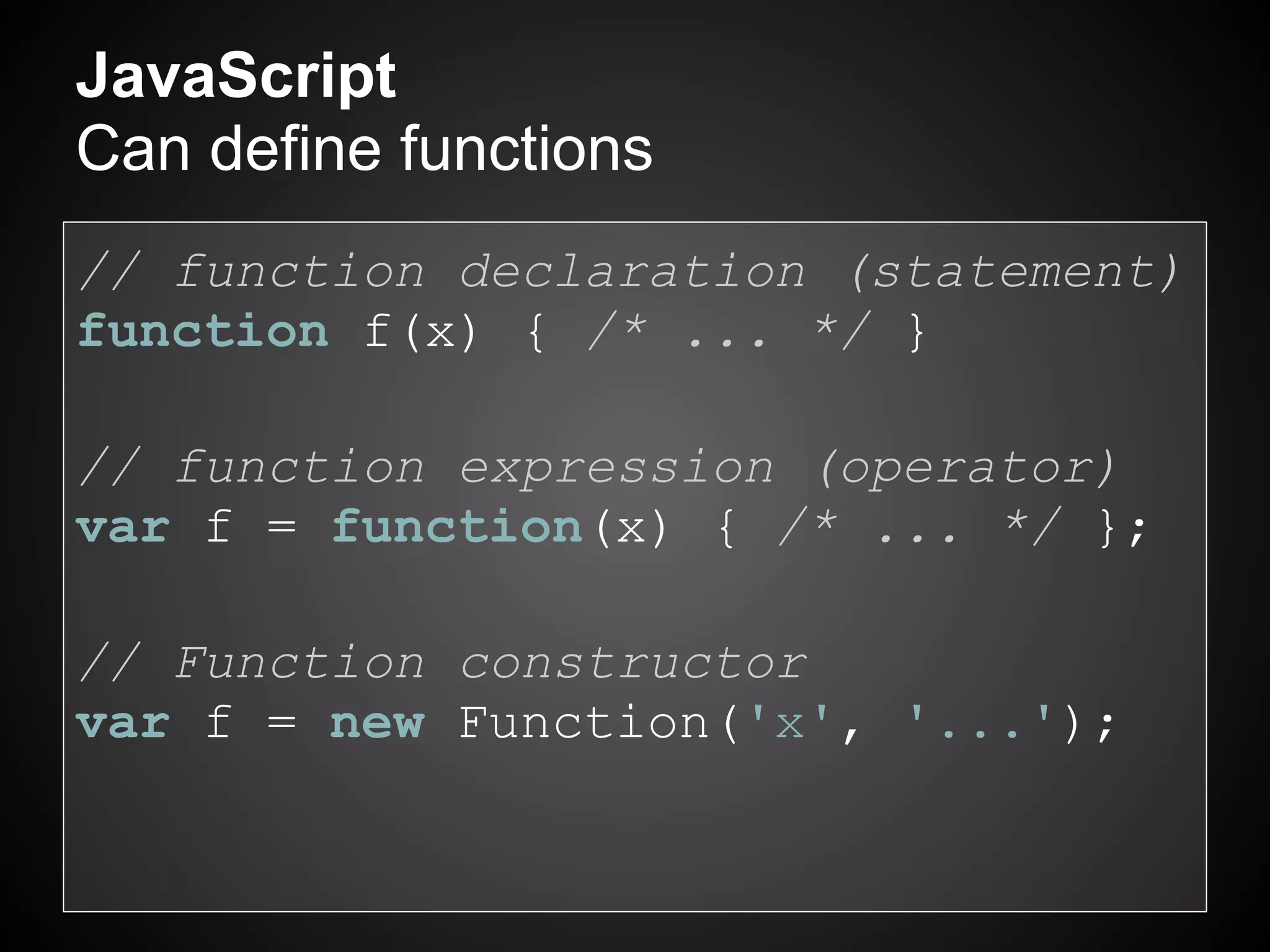
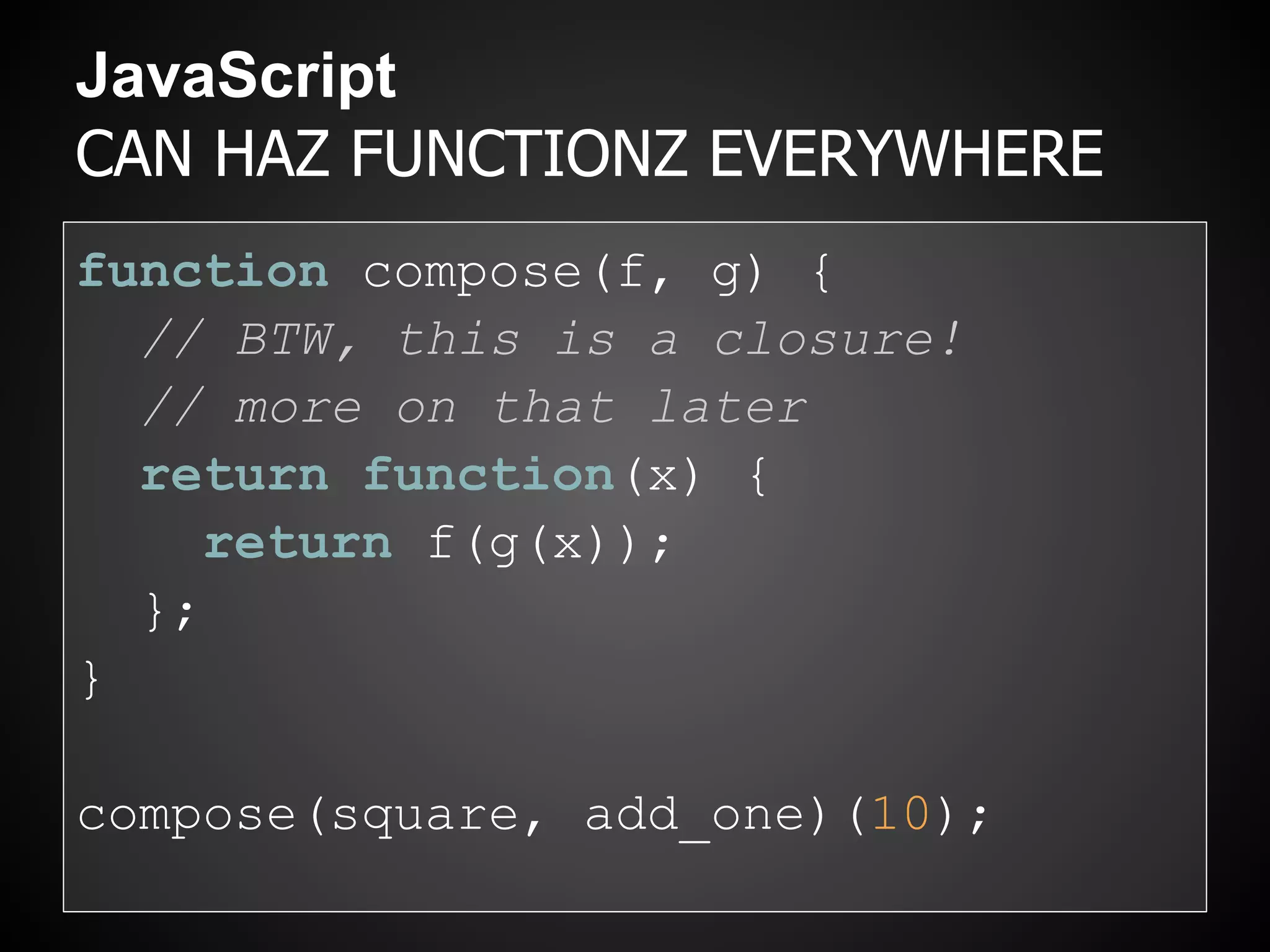
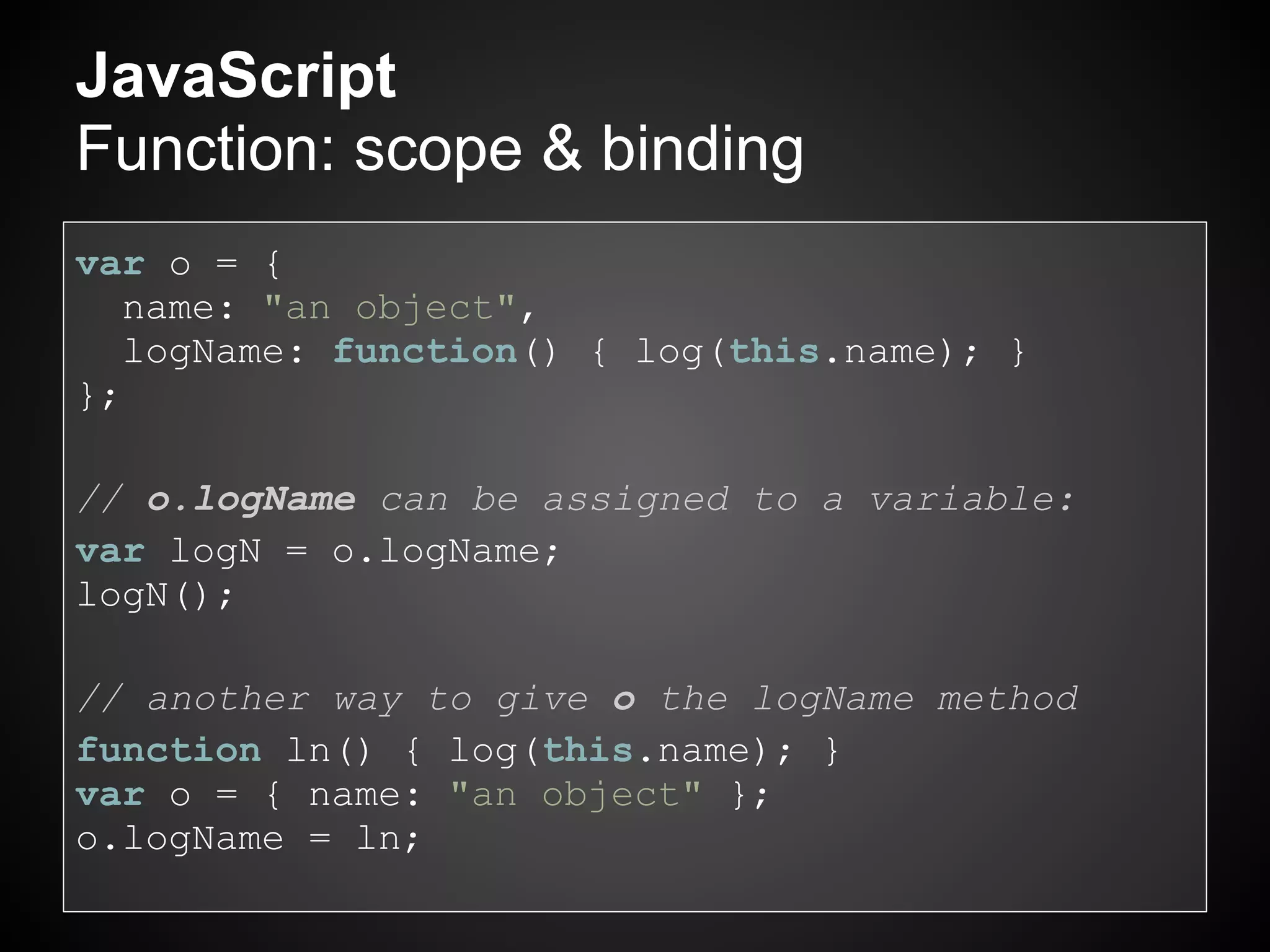
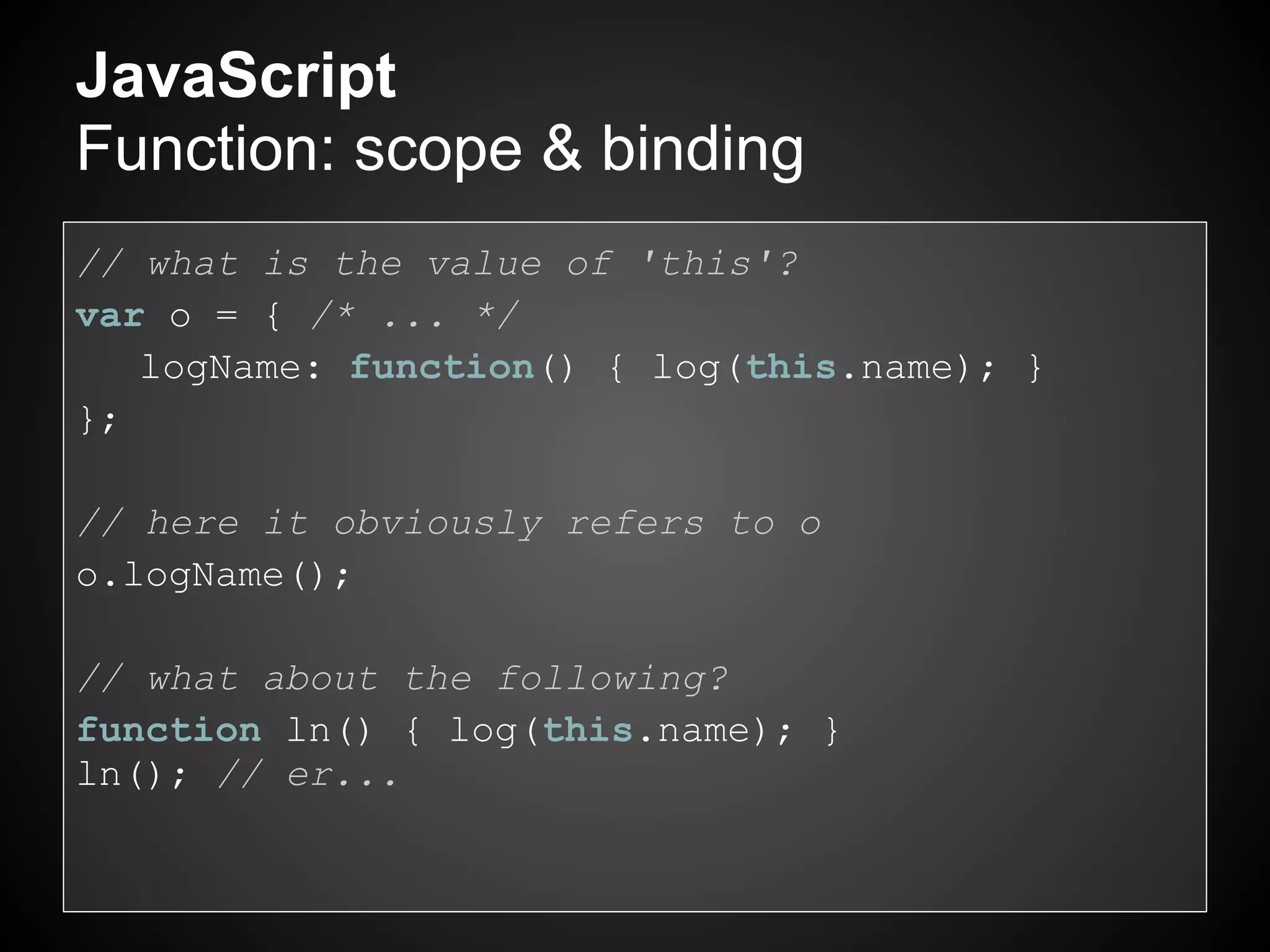
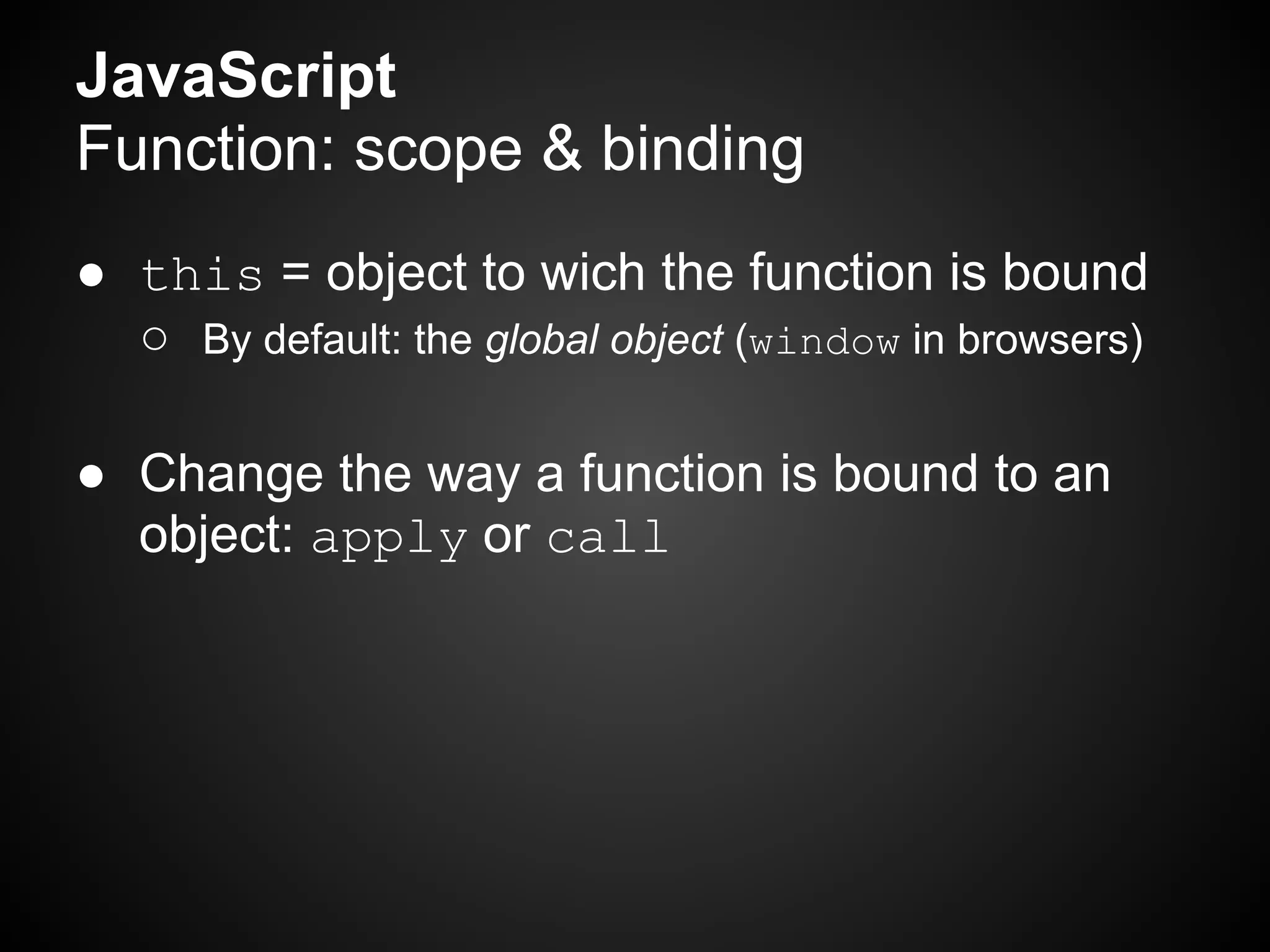
![JavaScript
Function: scope & binding
var o = { nm: "John Doe" };
function say(message) {
console.log(this.nm + ": " + message);
}
say("hello!"); // ": hello!" (this.nm is undefined)
o.sayIt = say;
o.sayIt("greetings!"); // "John Doe: greetings!"
say.call(o, "yo!"); // "John Doe: yo!"
say.apply(o, ["hi!"]); // "John Doe: hi!"](https://image.slidesharecdn.com/javascriptcore-121004232850-phpapp02/75/JavaScript-Core-15-2048.jpg)
![JavaScript
Function arguments
(function(x, y) {
console.log(y); > 'b'
console.log(arguments.length); > 3
console.log(arguments[2]); > 'c'
console.log(arguments.callee);> function(){ }
console.log(arguments.join); > undefined
// Array.prototype.join.call(arguments)
})('a', 'b', 'c');](https://image.slidesharecdn.com/javascriptcore-121004232850-phpapp02/75/JavaScript-Core-16-2048.jpg)
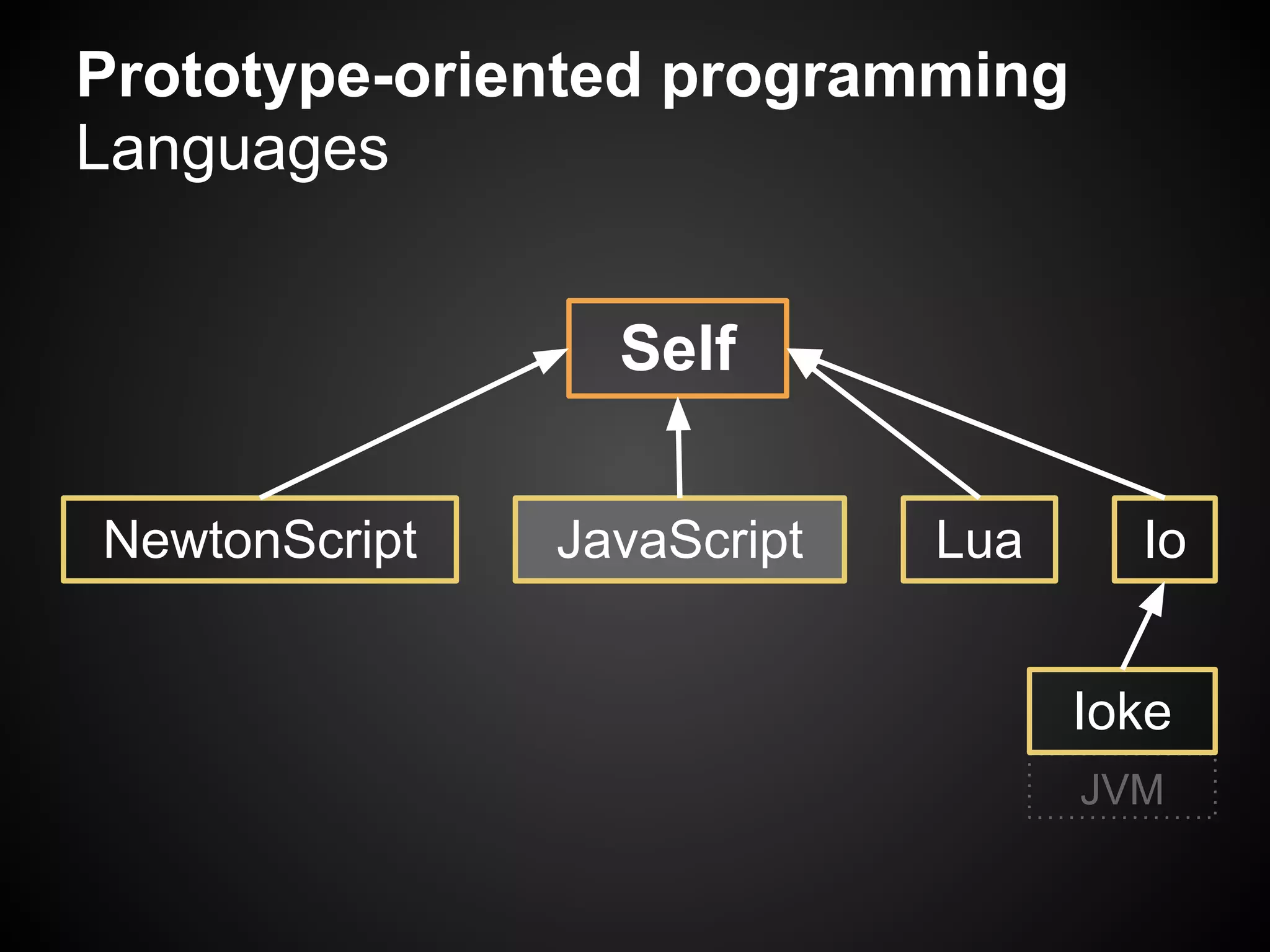
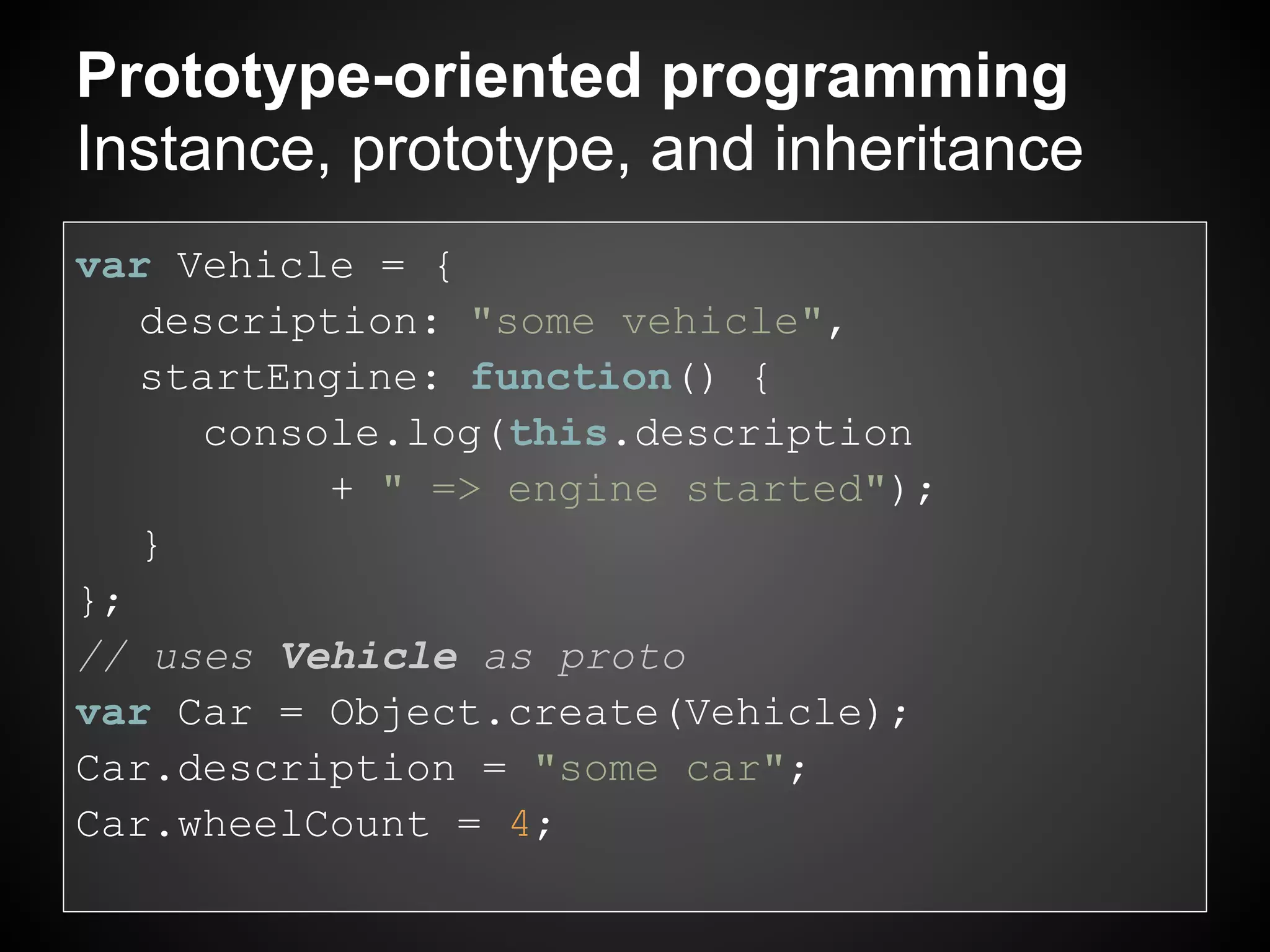
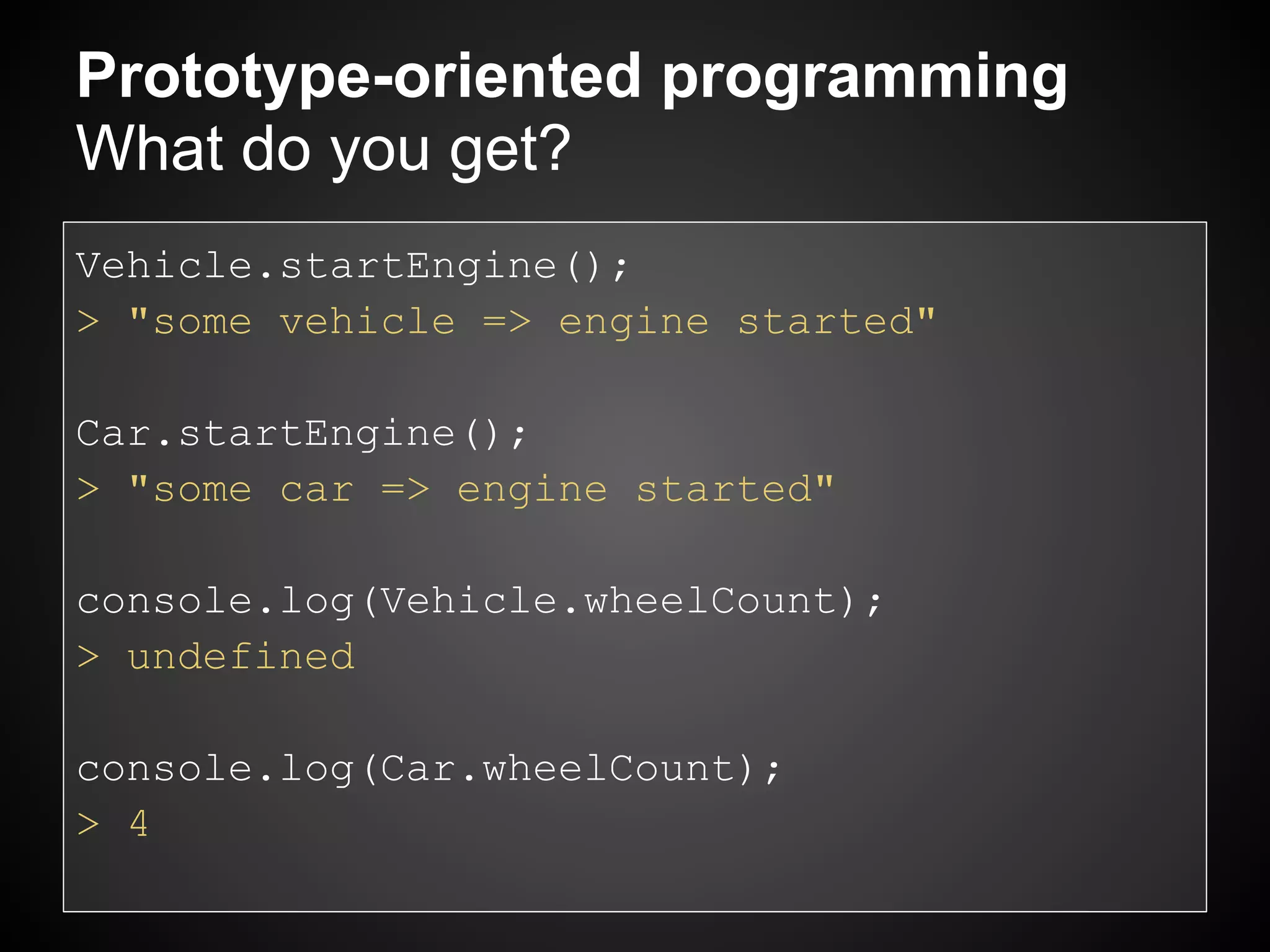
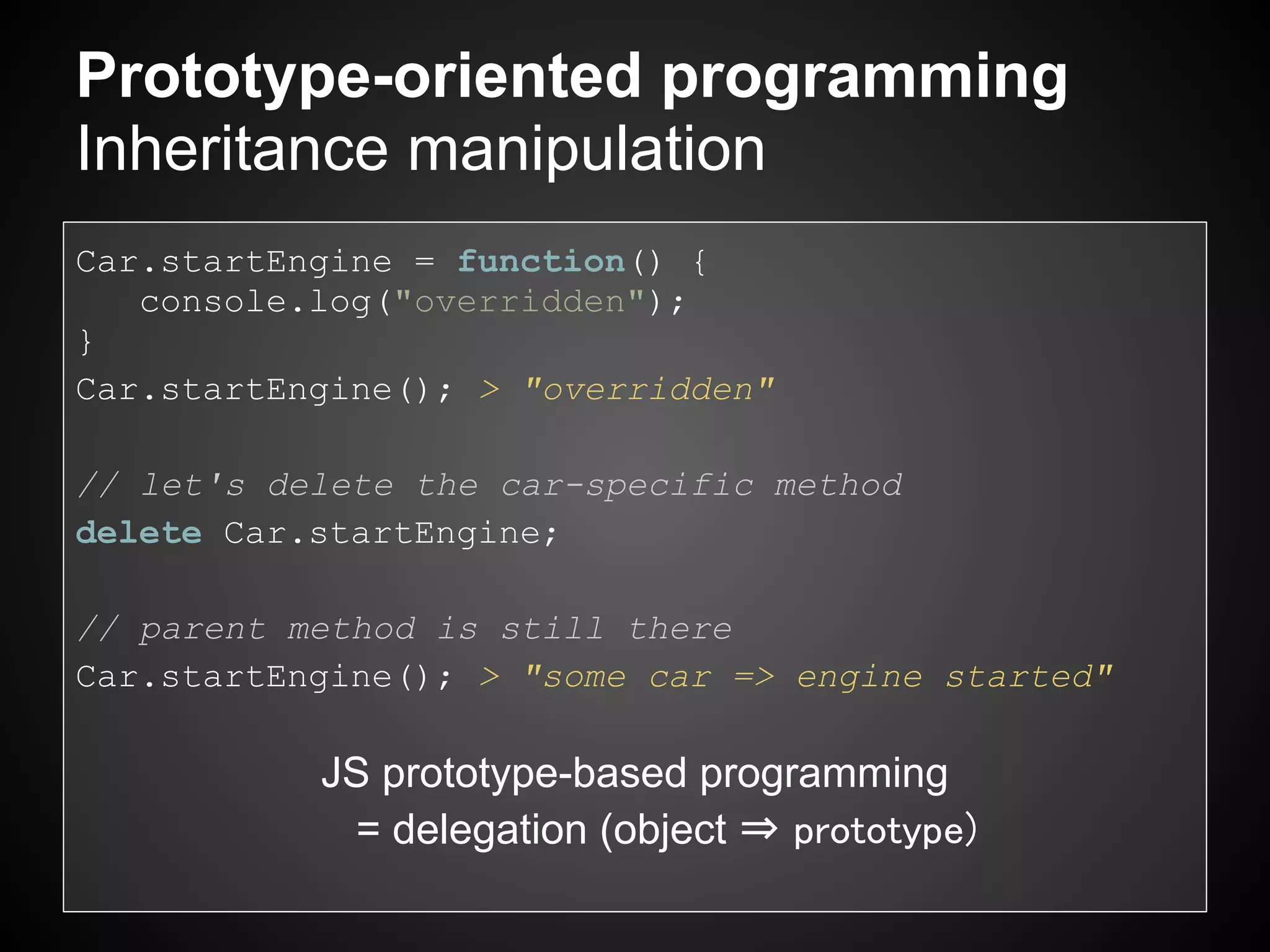
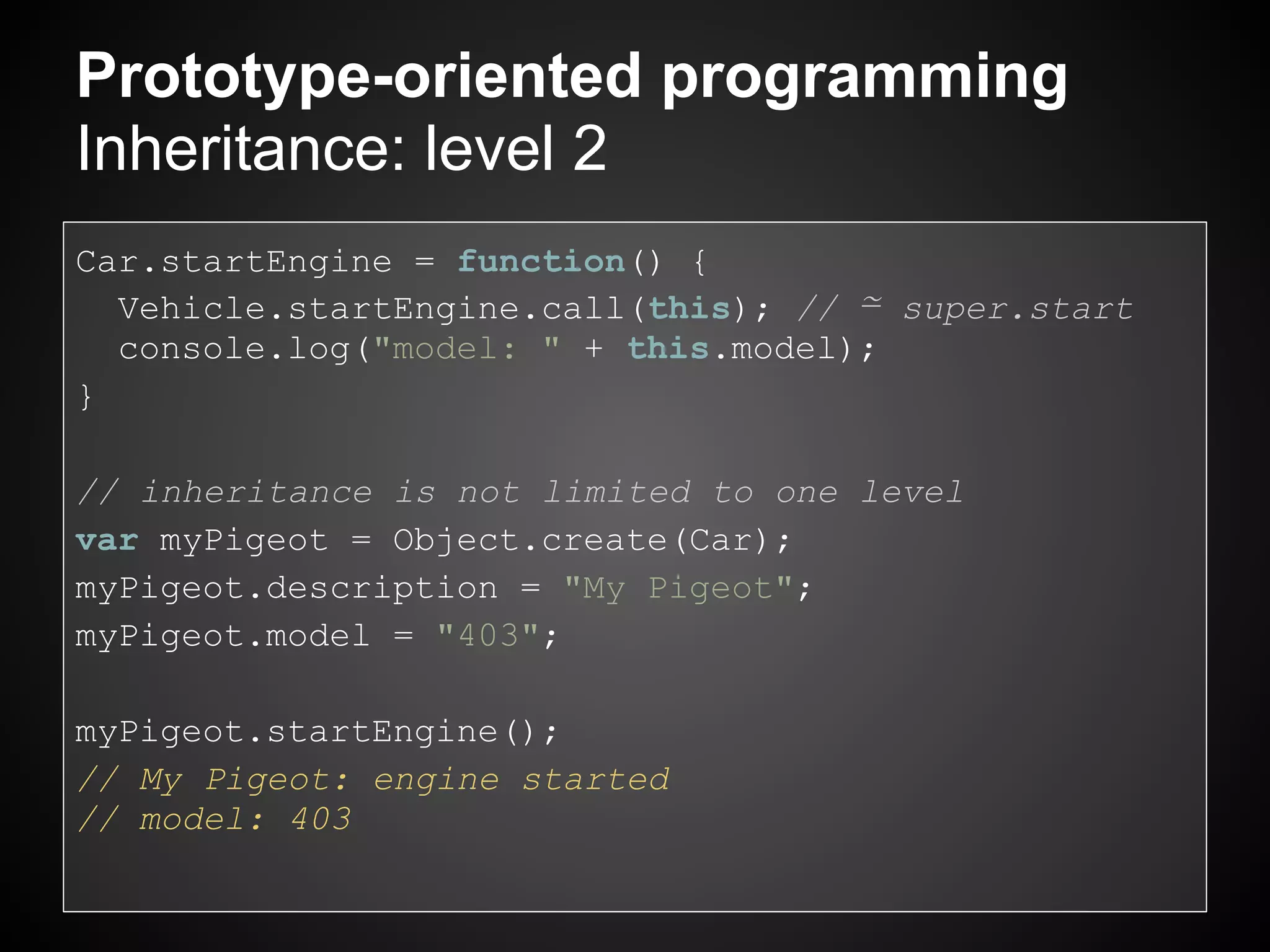
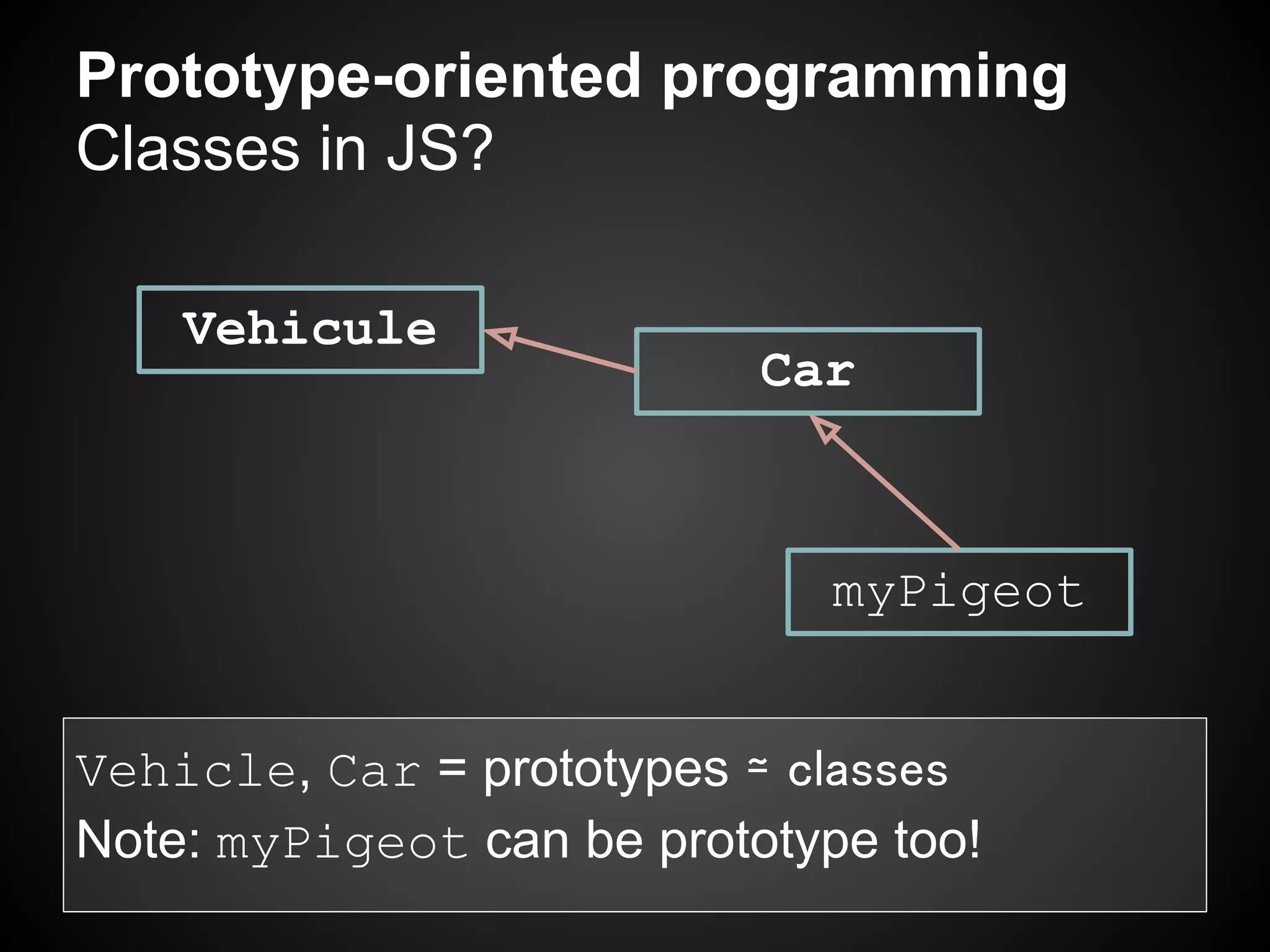
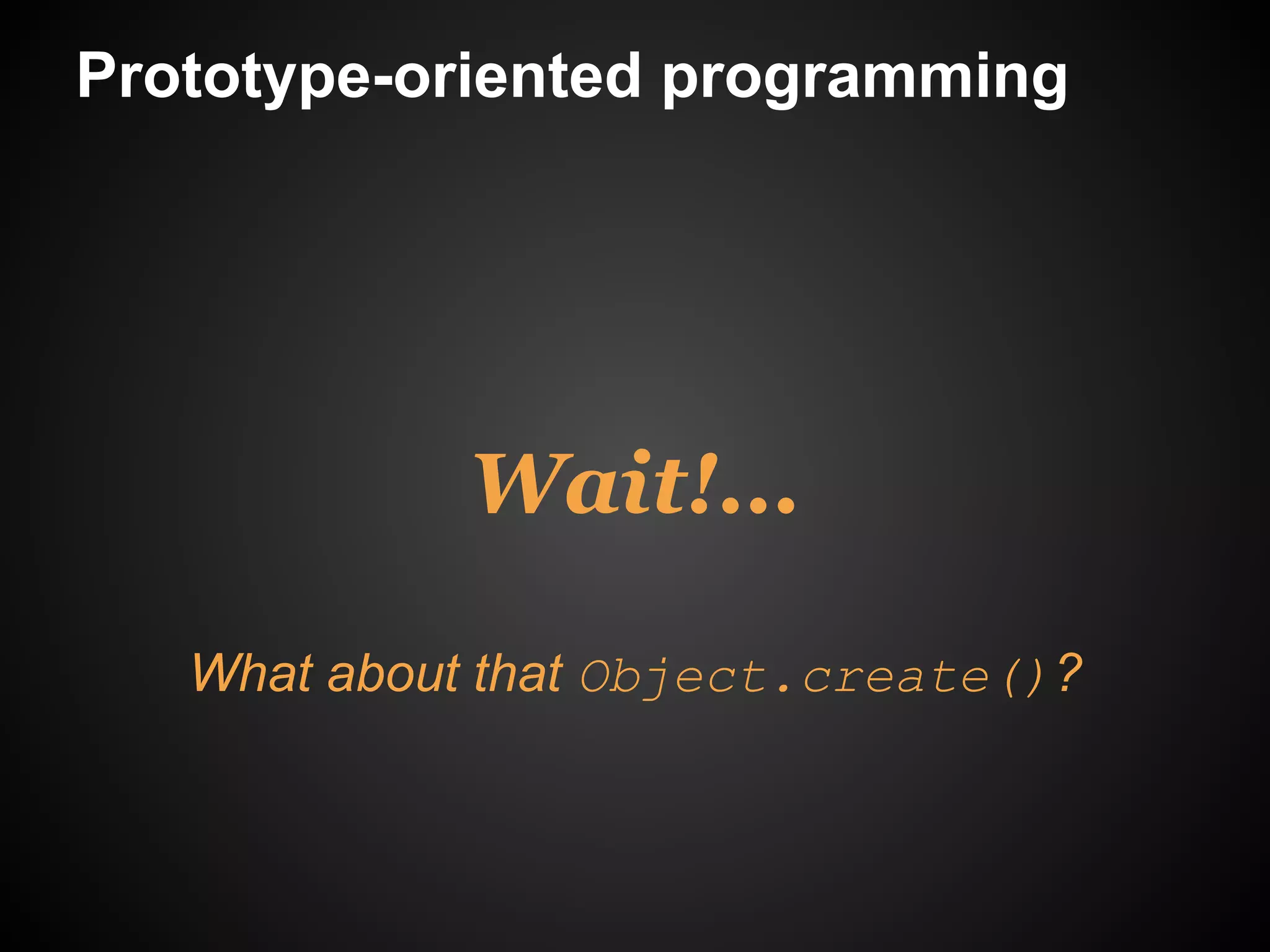
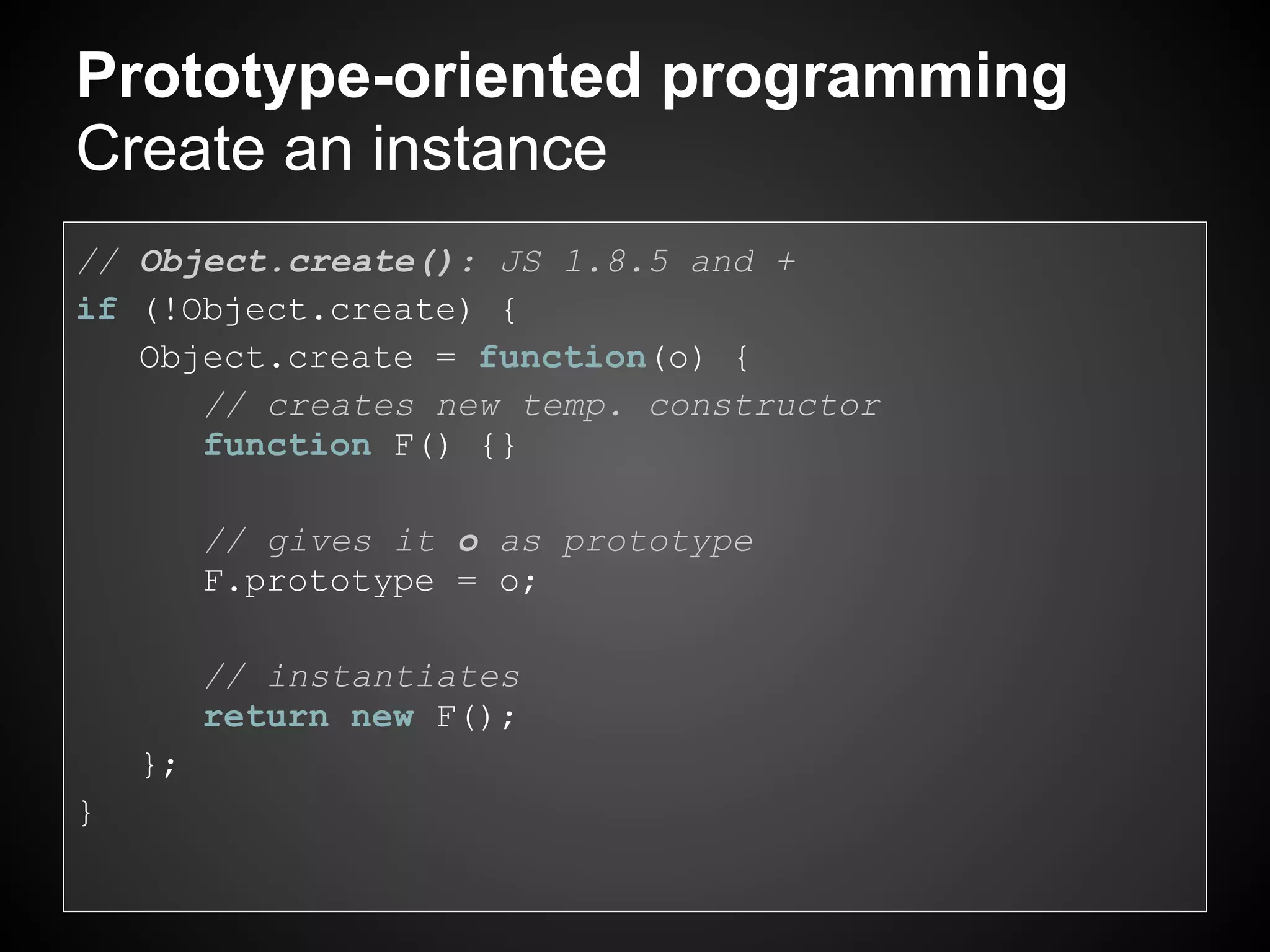
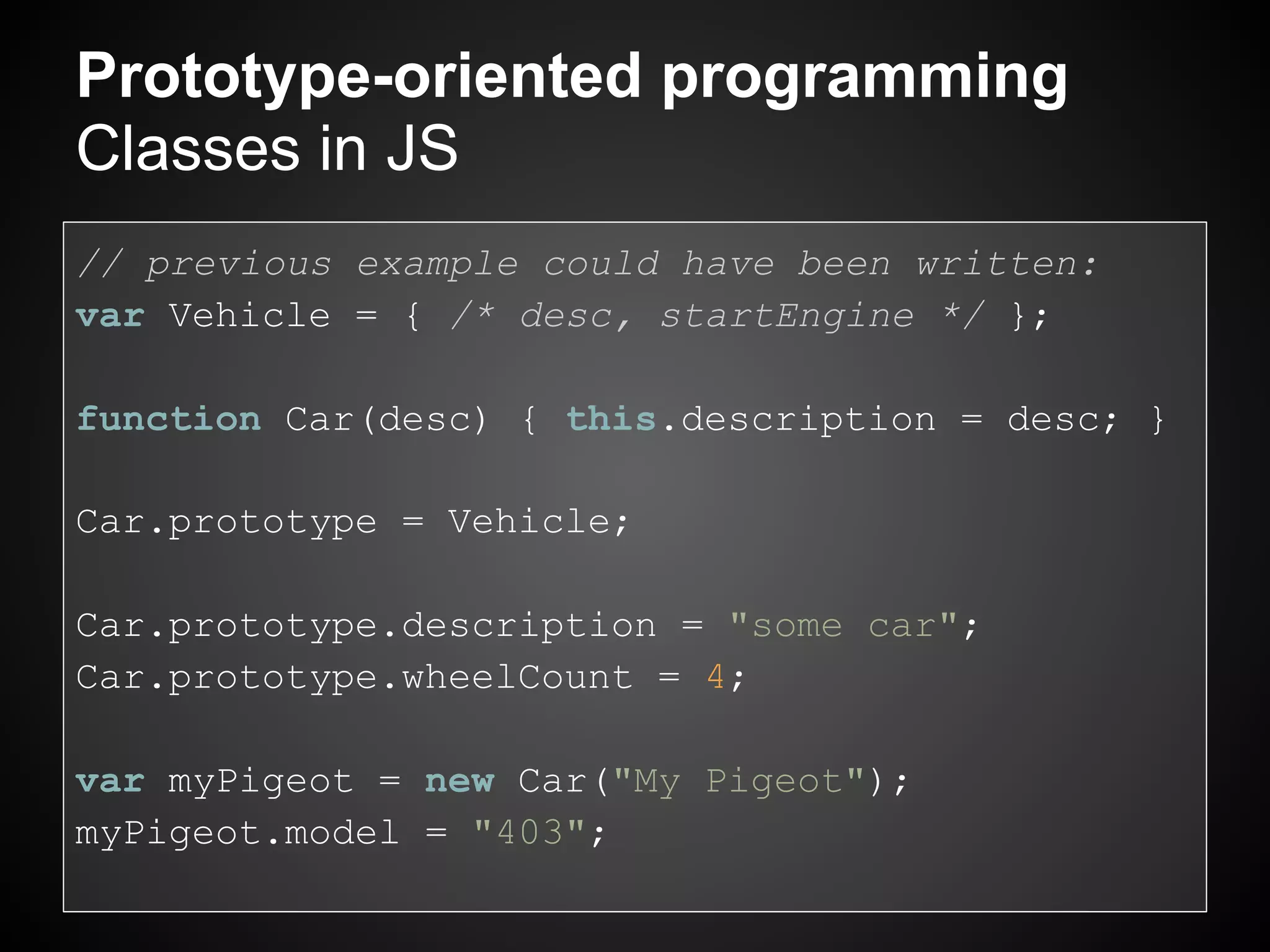
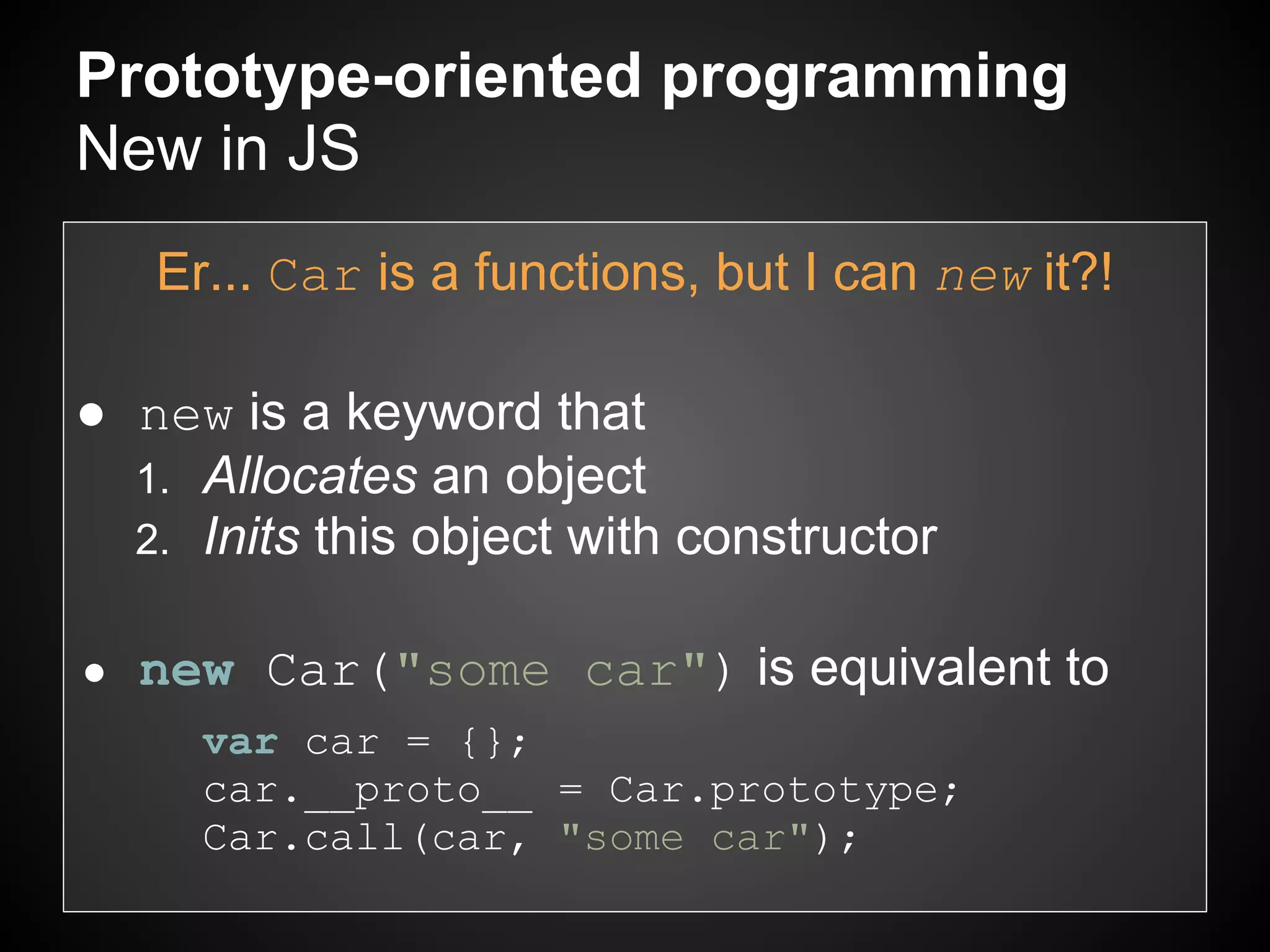
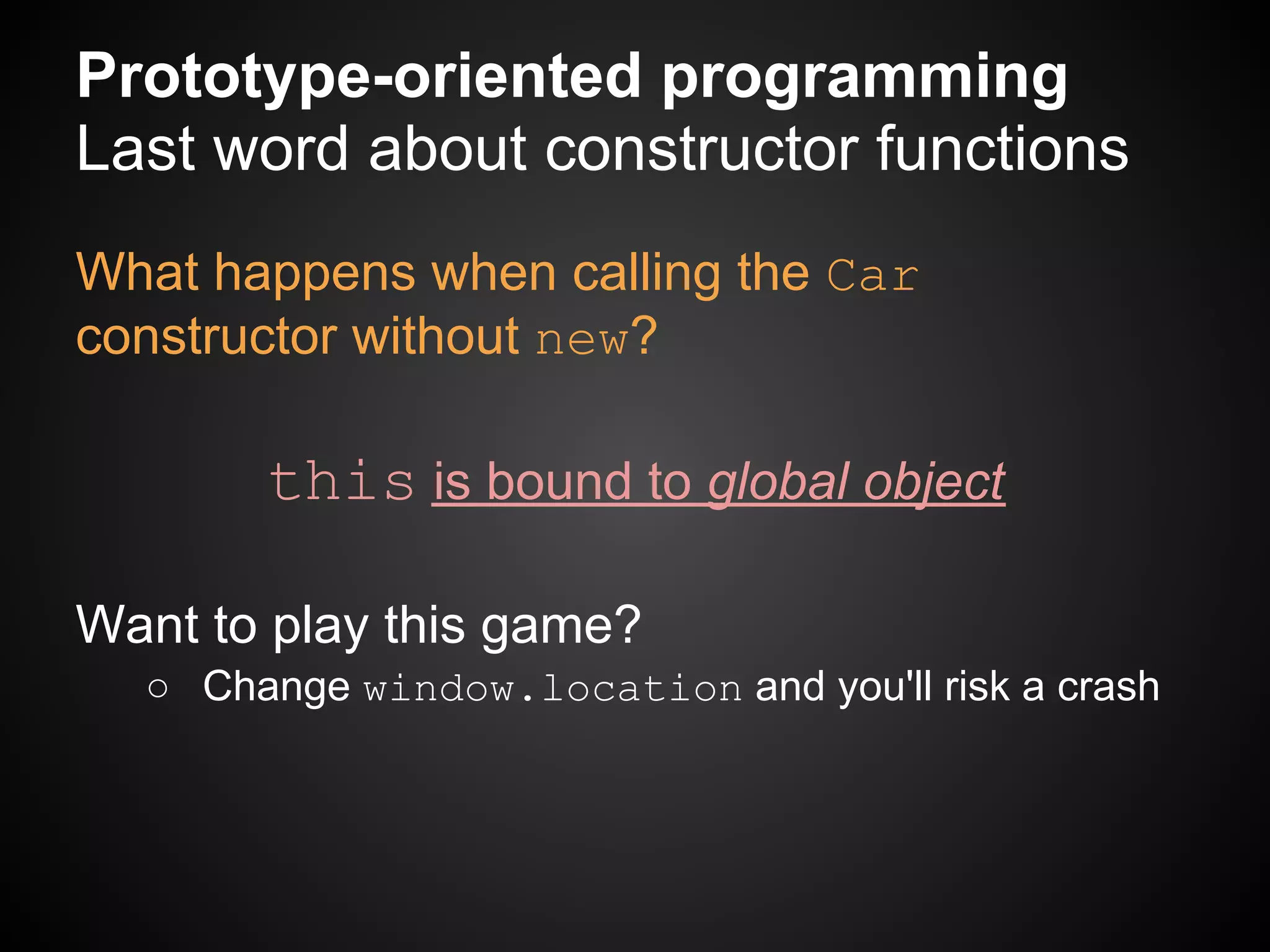
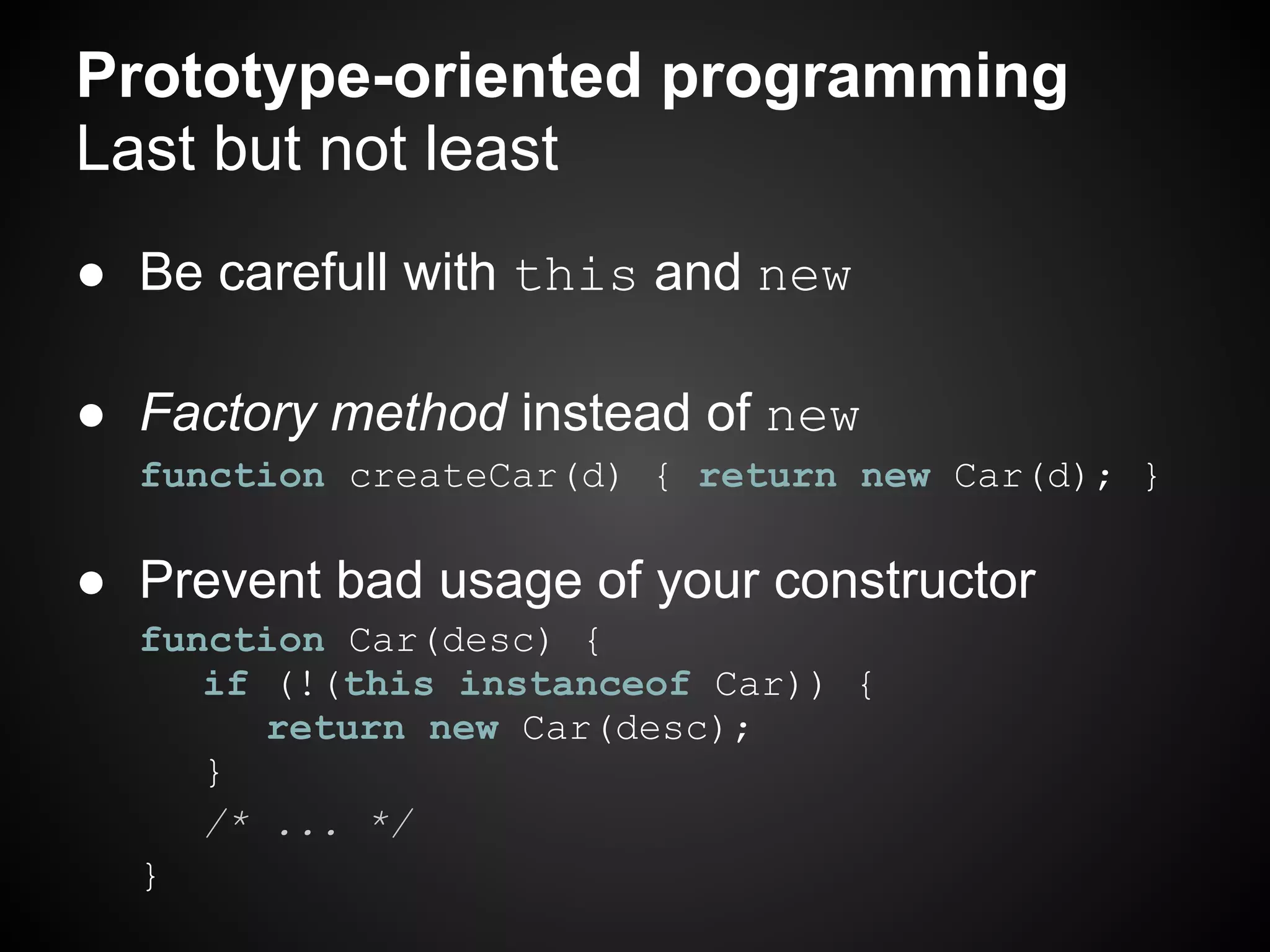
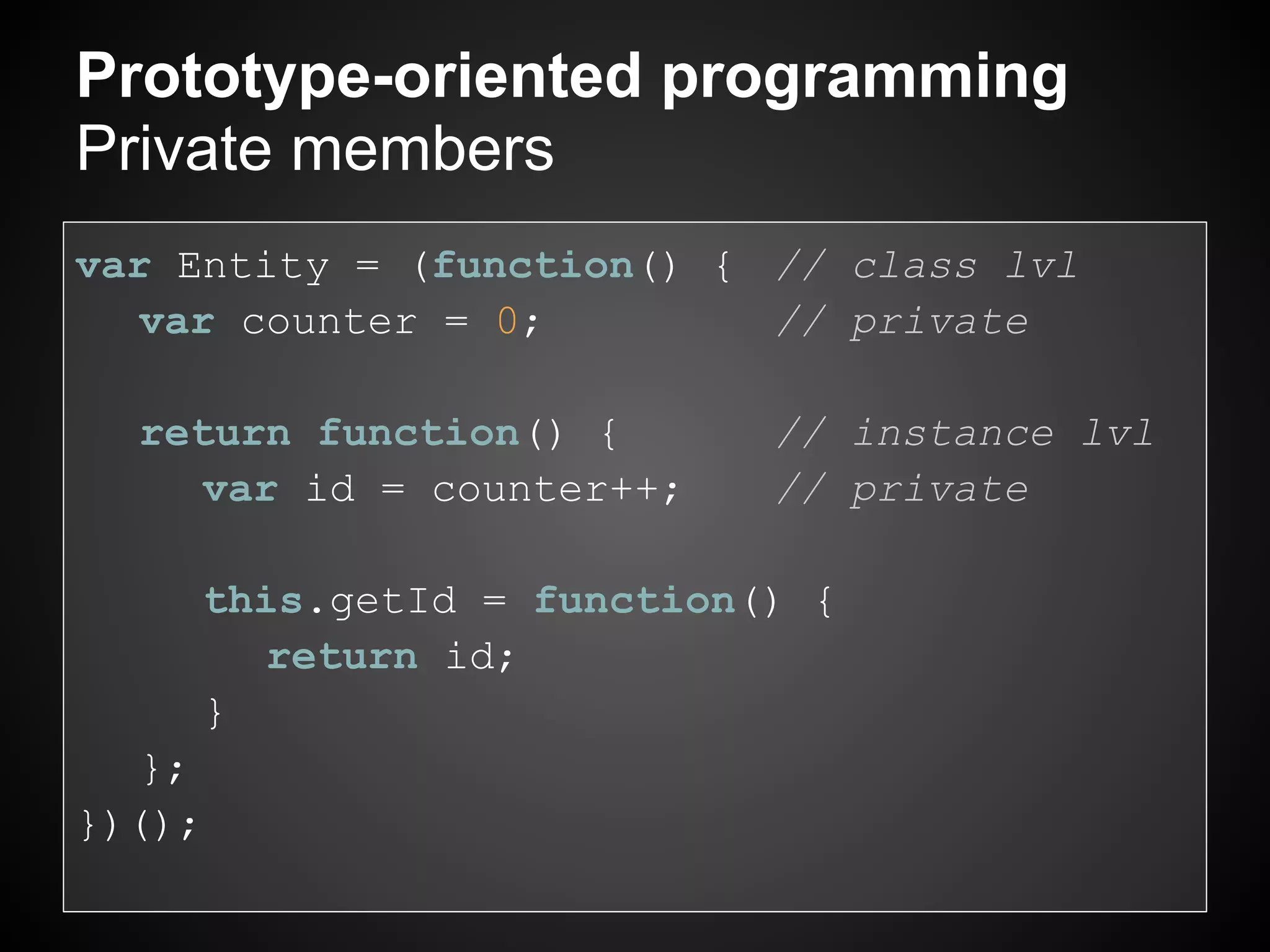
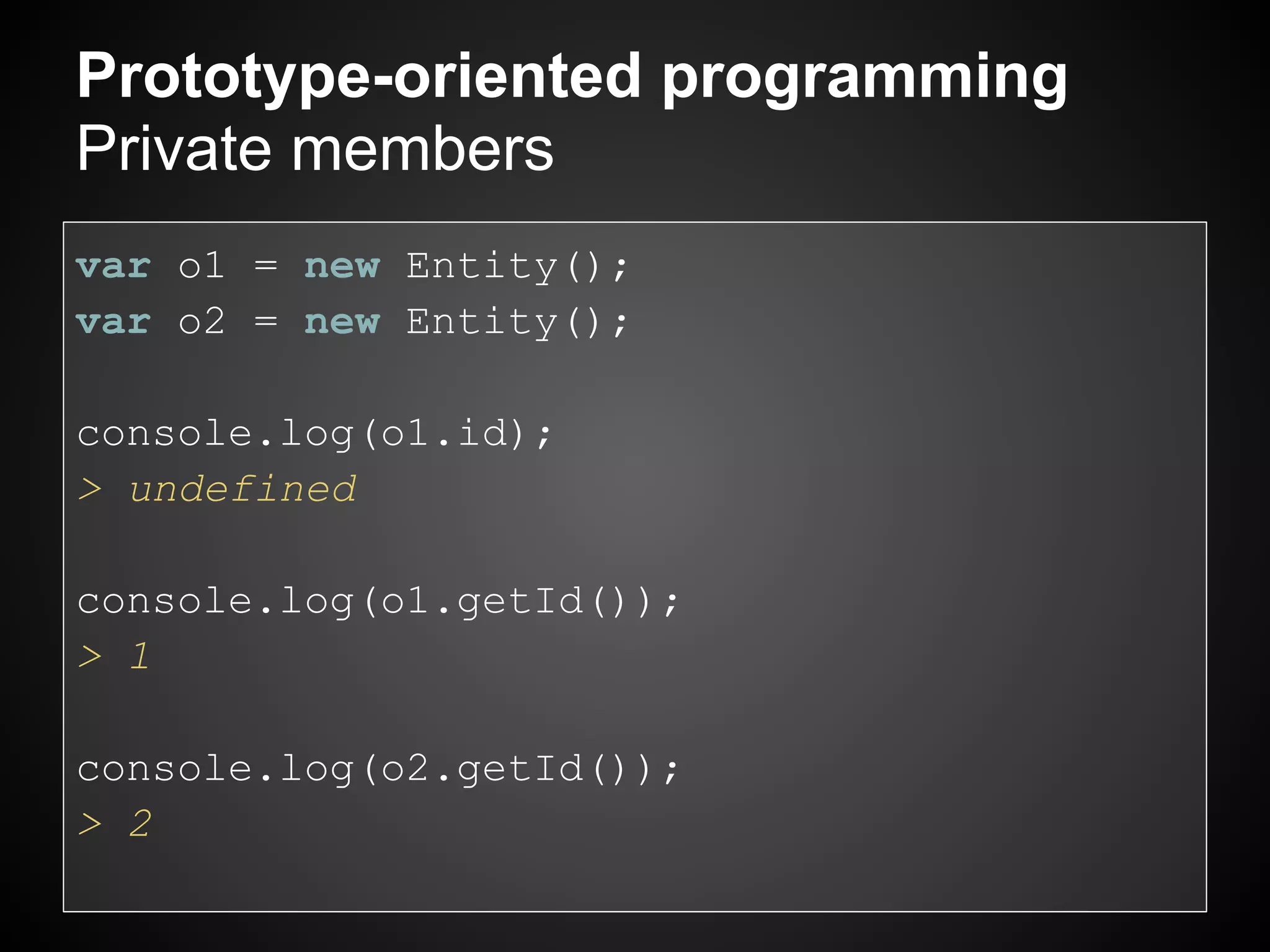
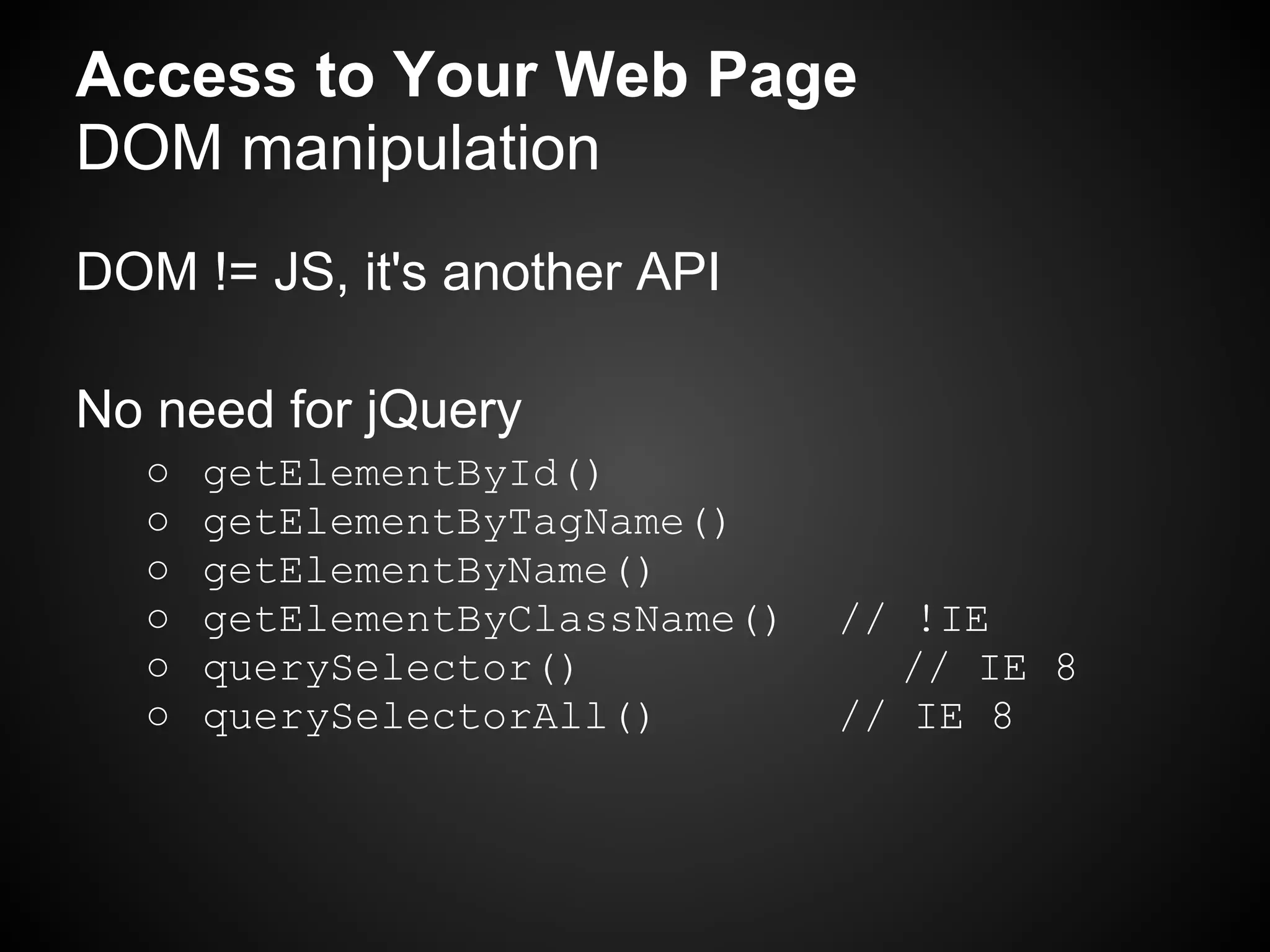
![Access to Your Web Page
DOM manipulation: tips
● know your CSS selectors
○ #element
○ .element
○ [attribute=value]
● limit changes to the DOM
○ use fragments](https://image.slidesharecdn.com/javascriptcore-121004232850-phpapp02/75/JavaScript-Core-32-2048.jpg)
